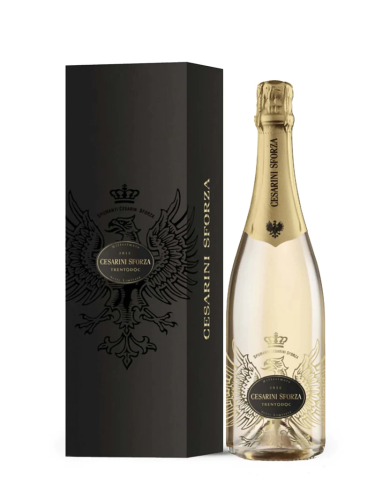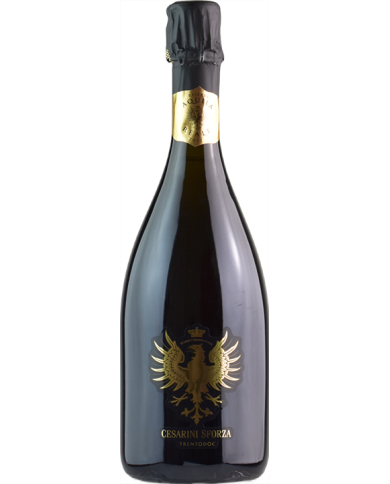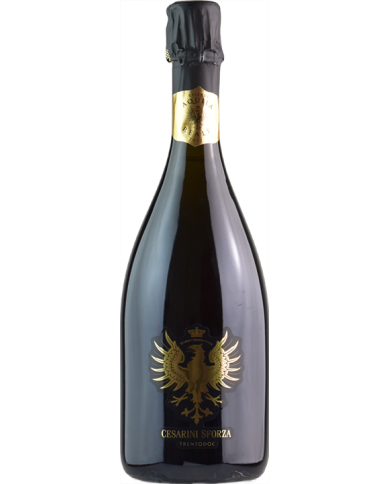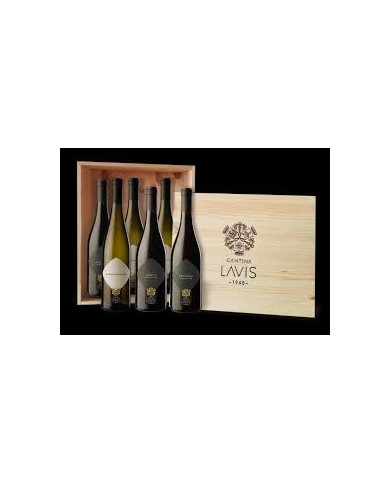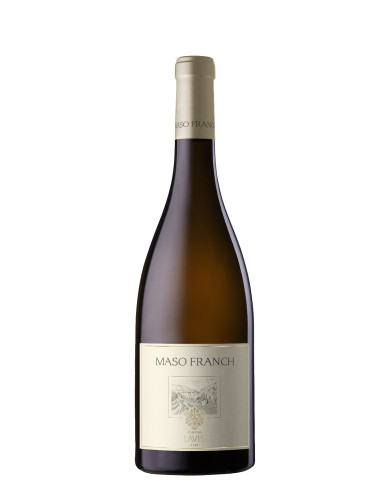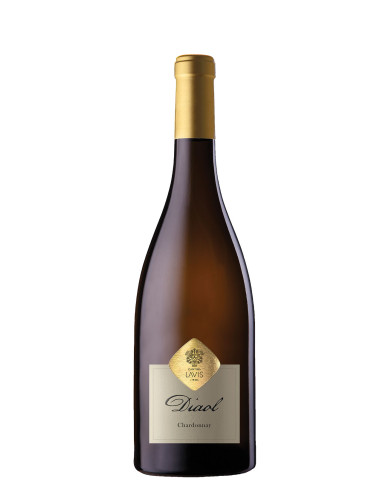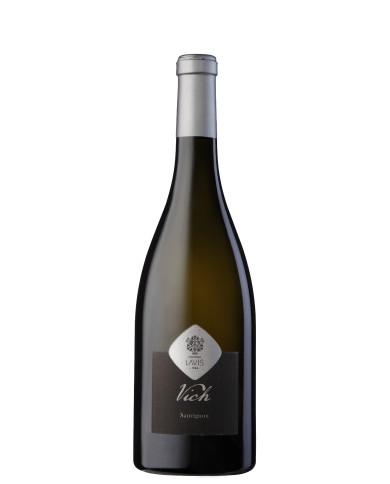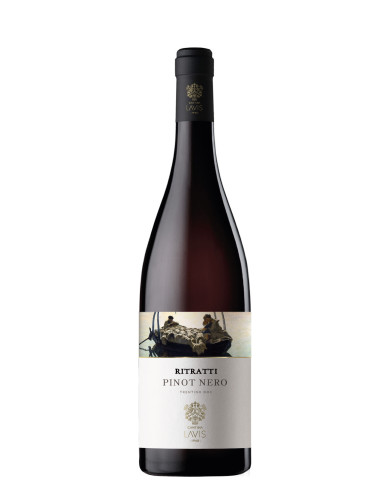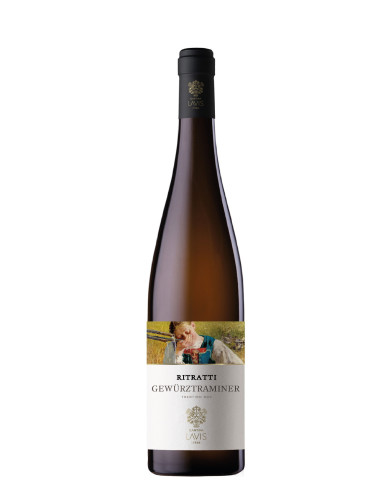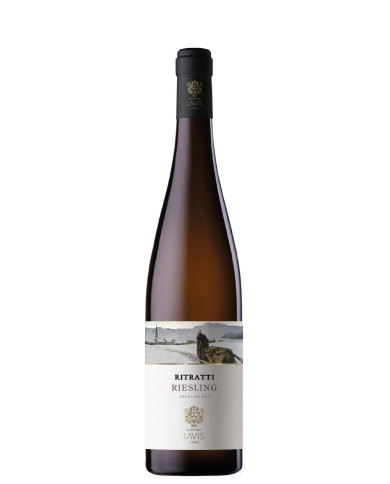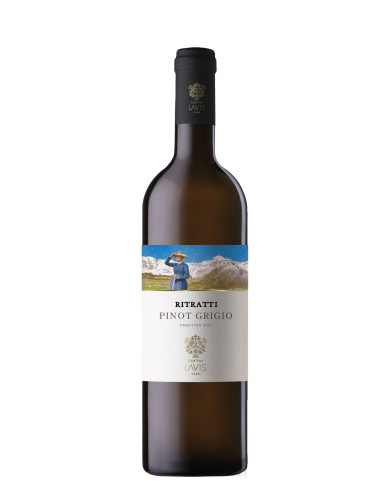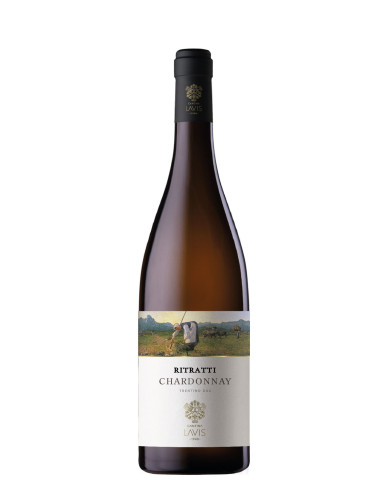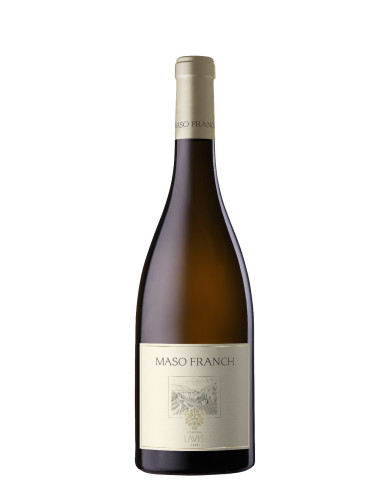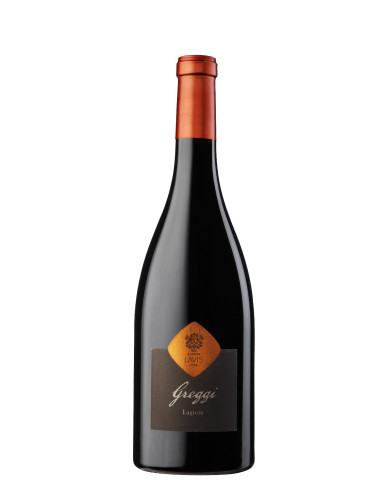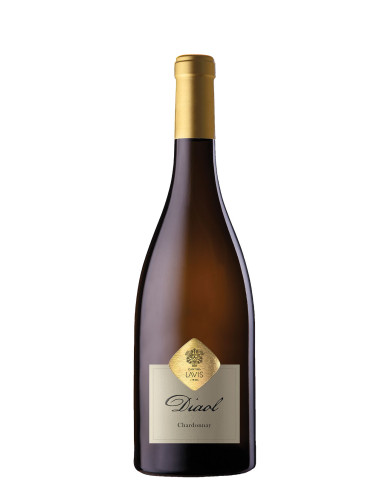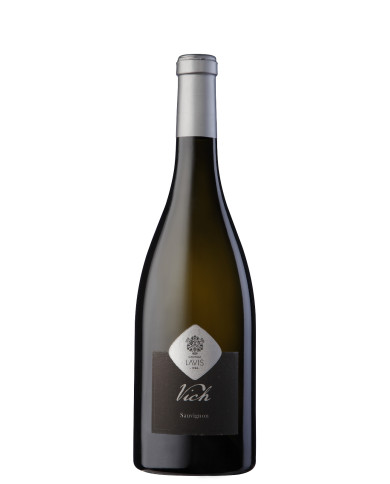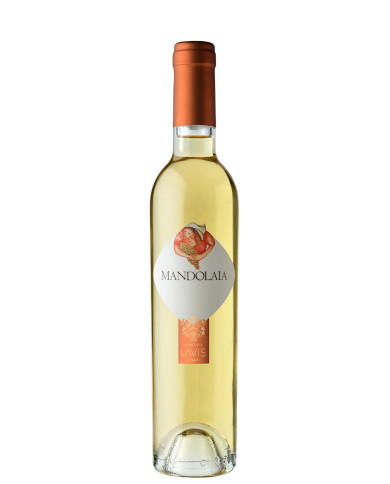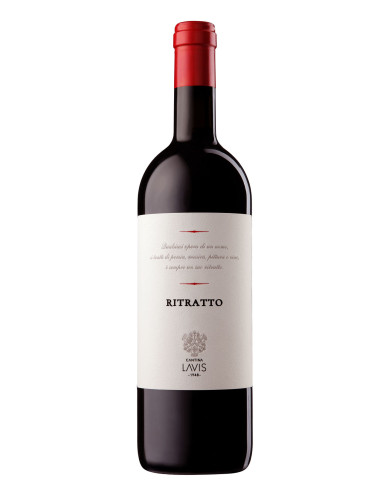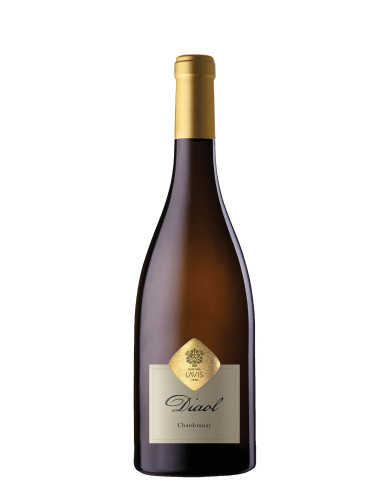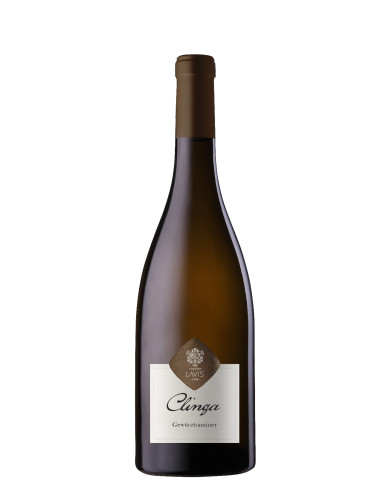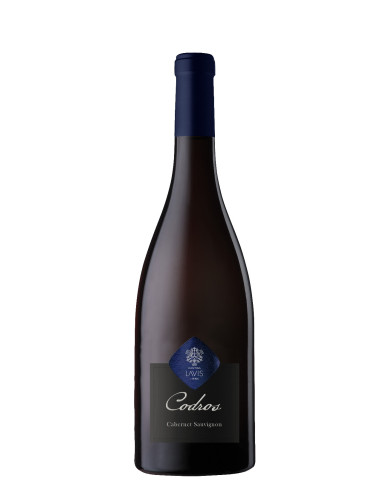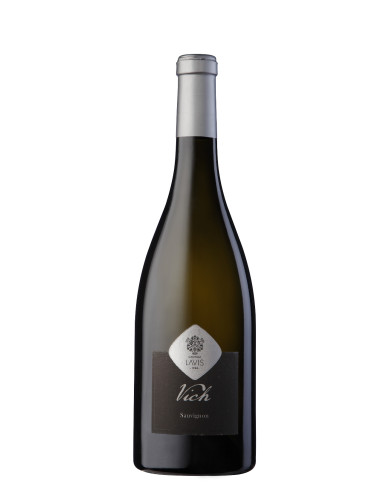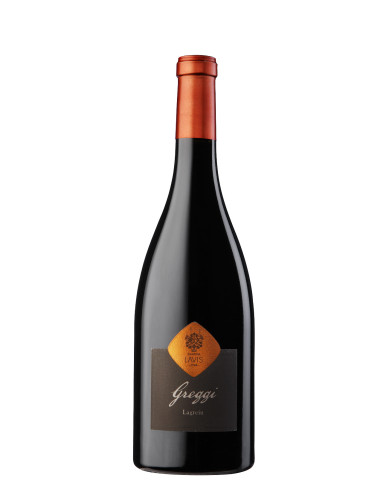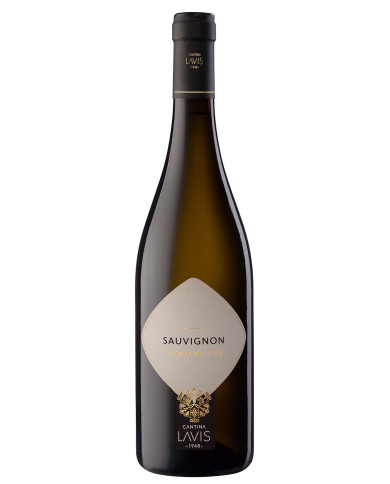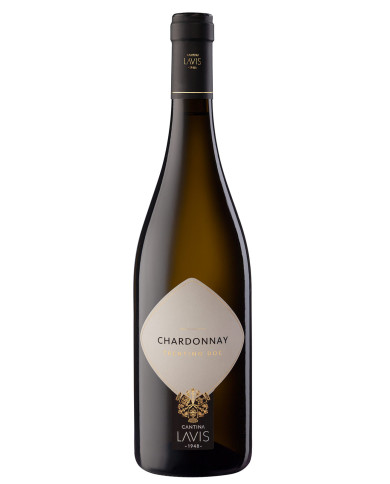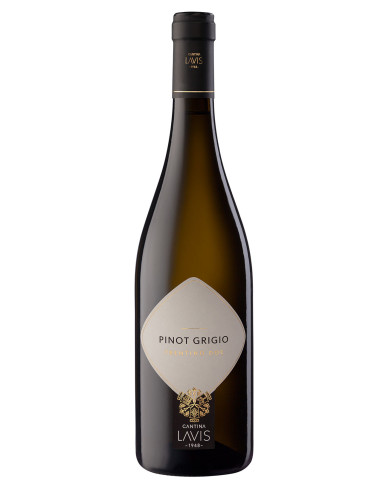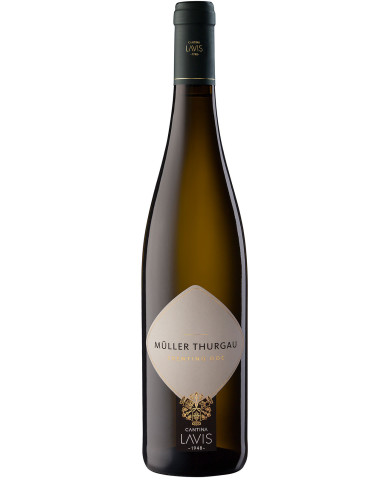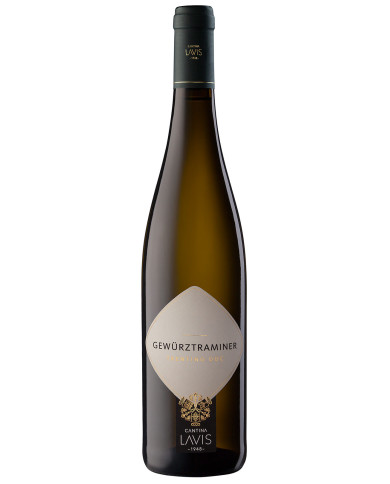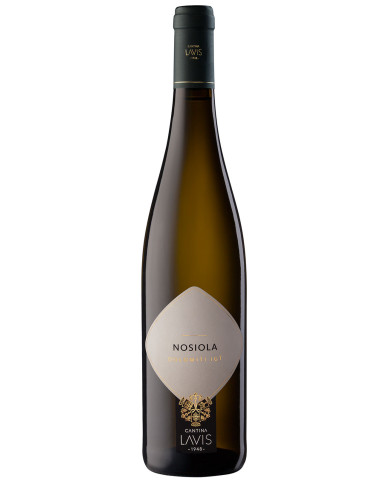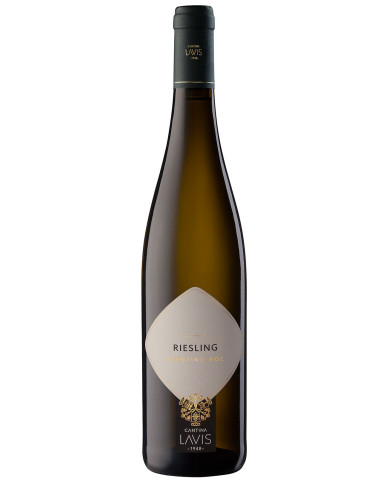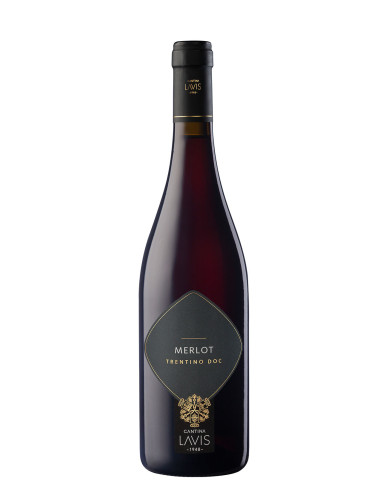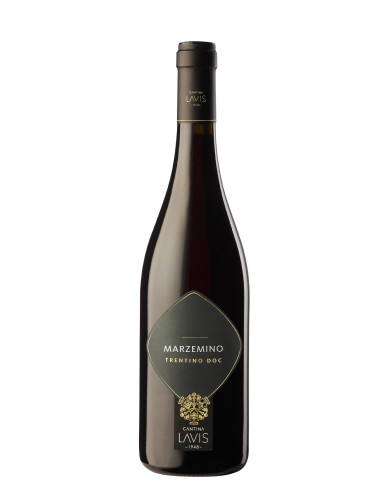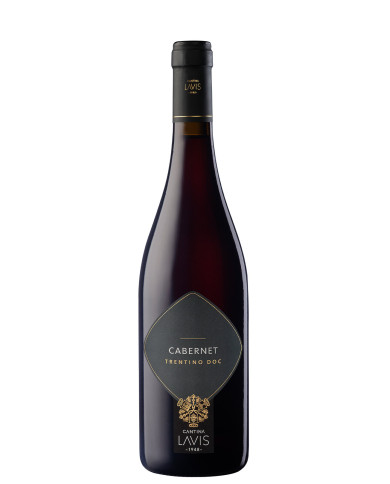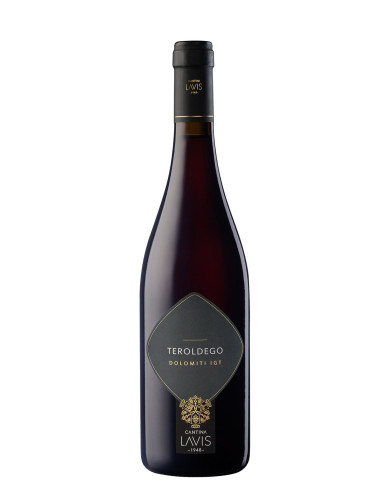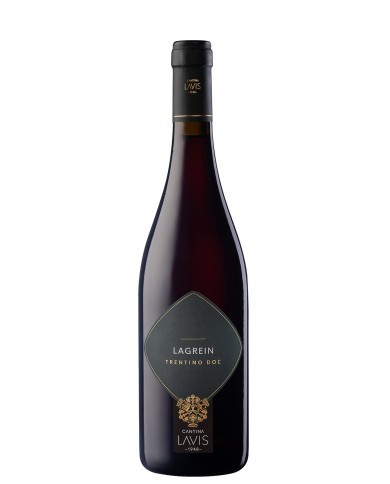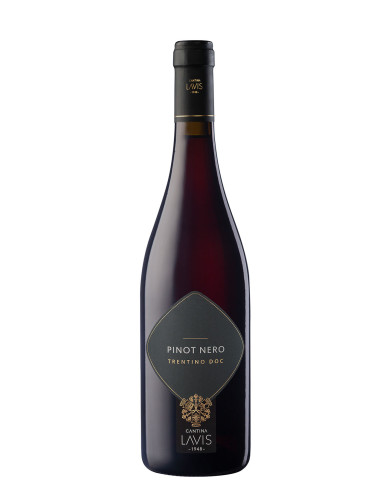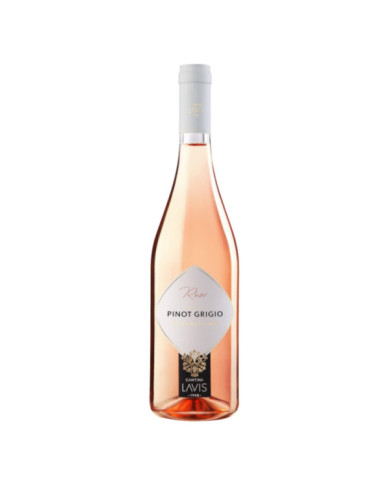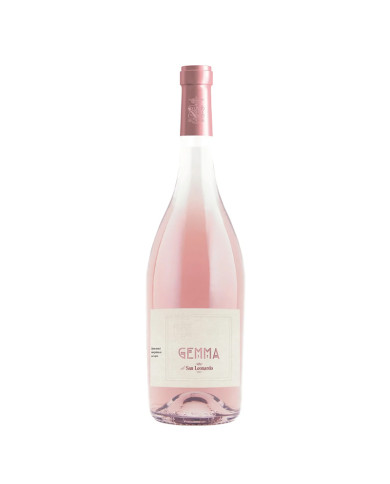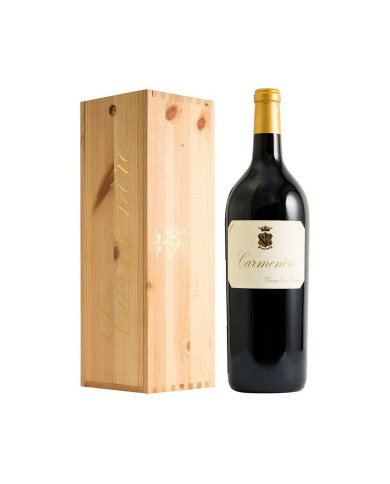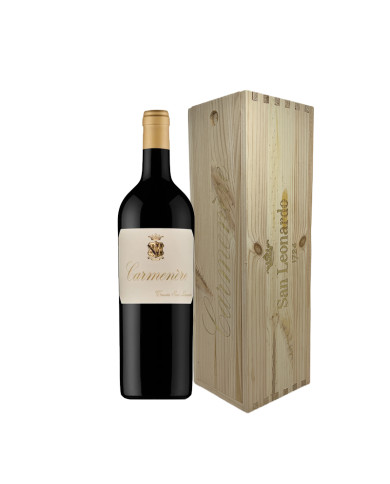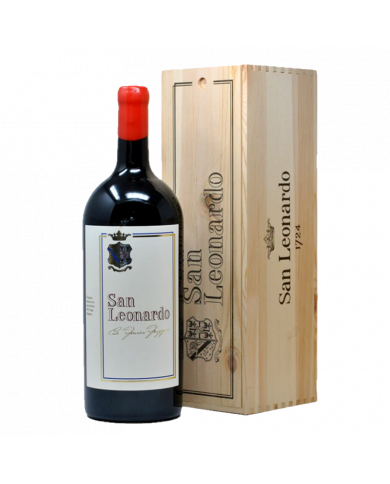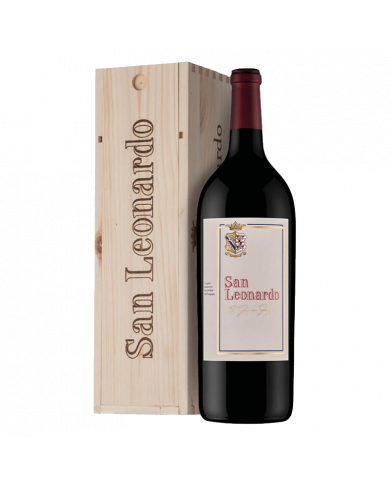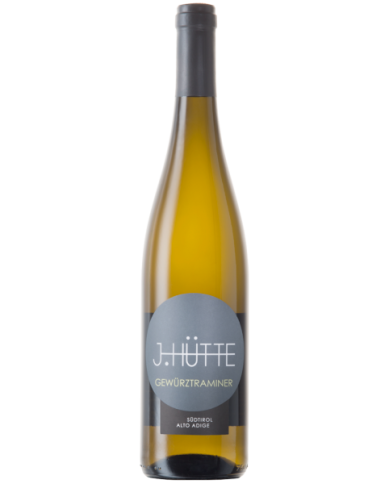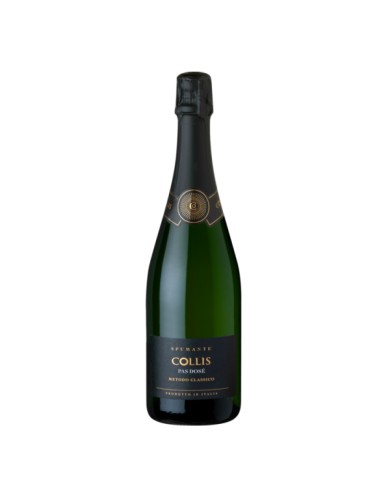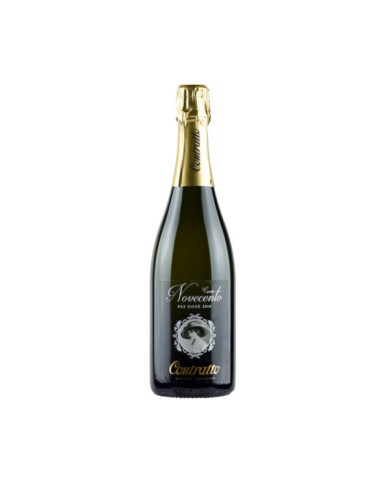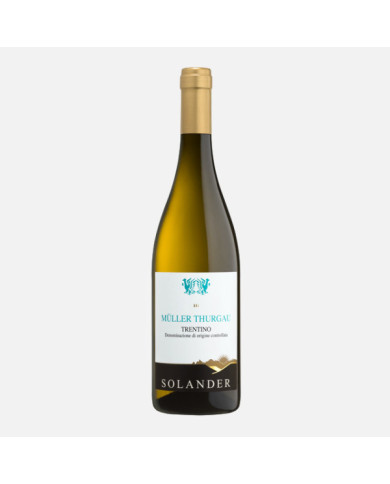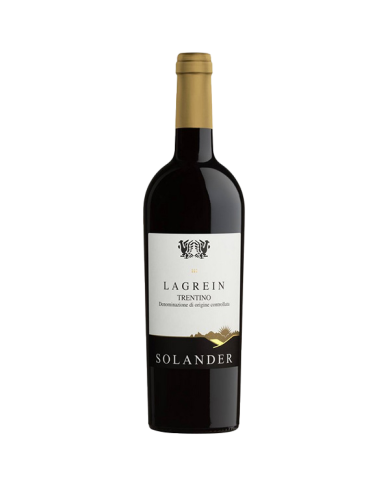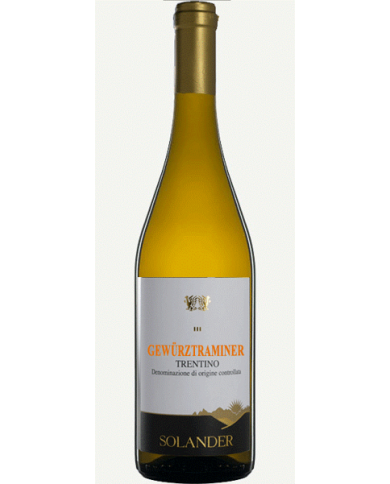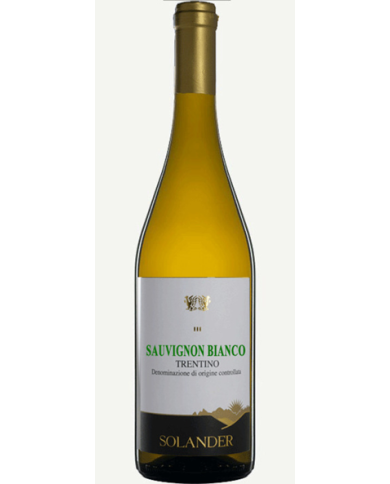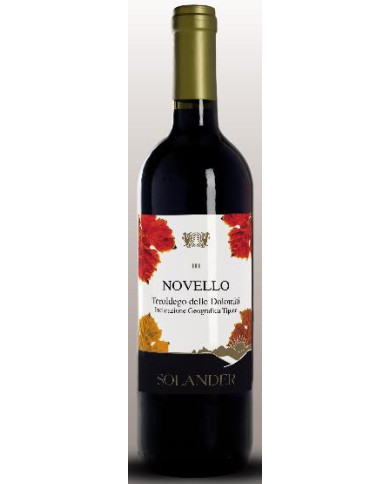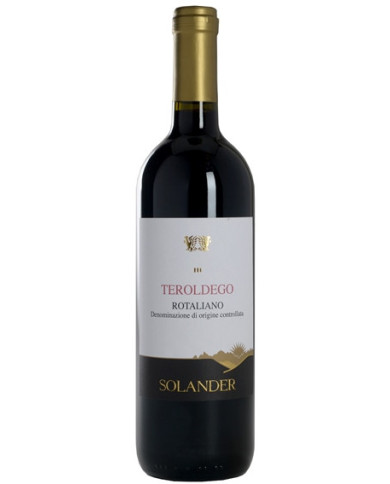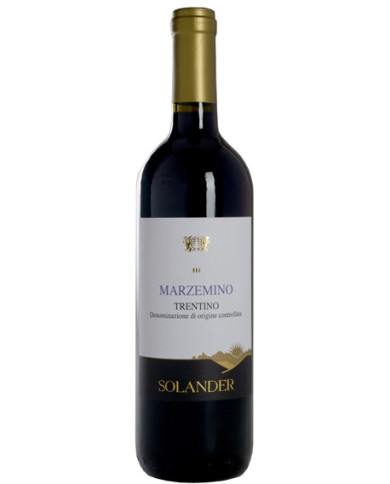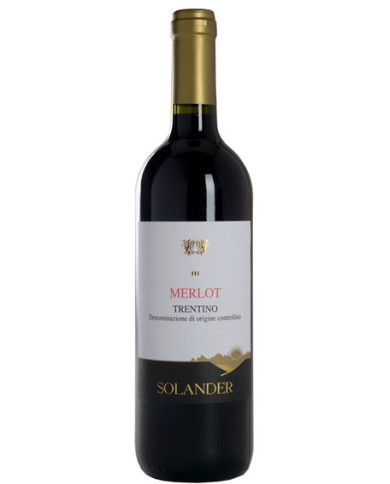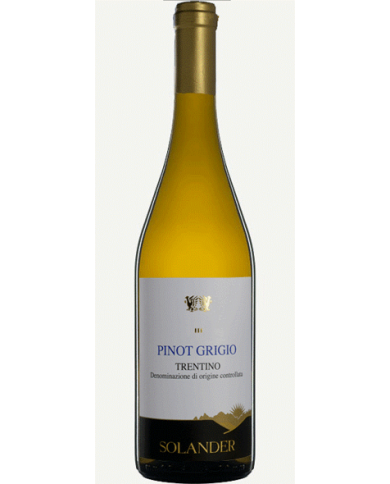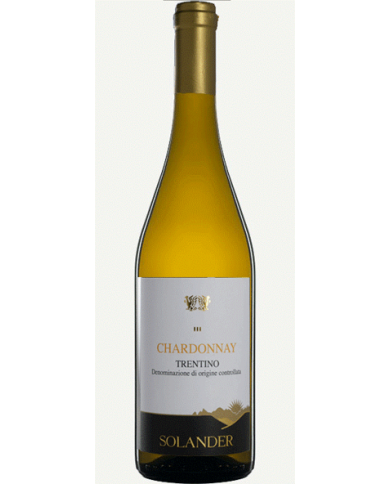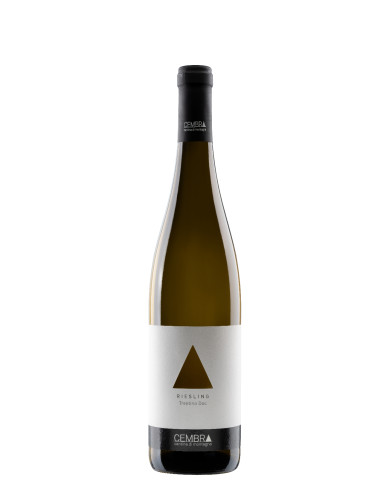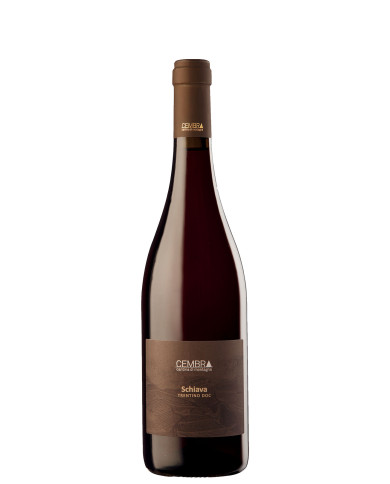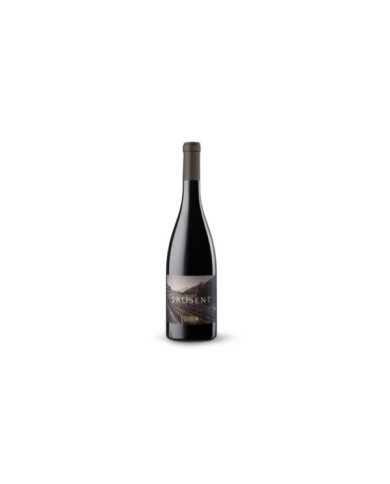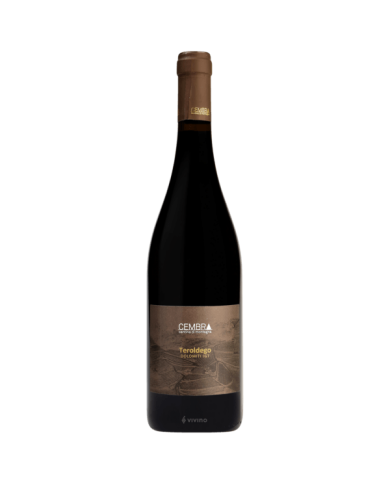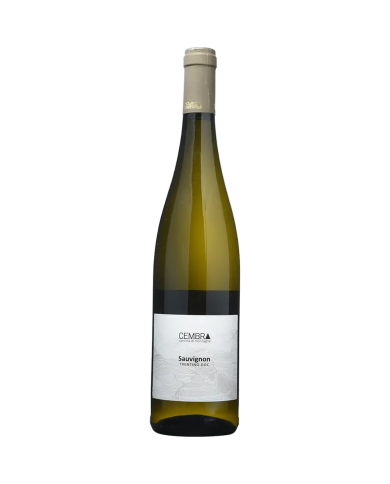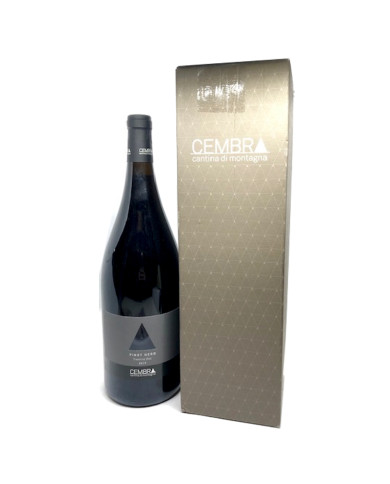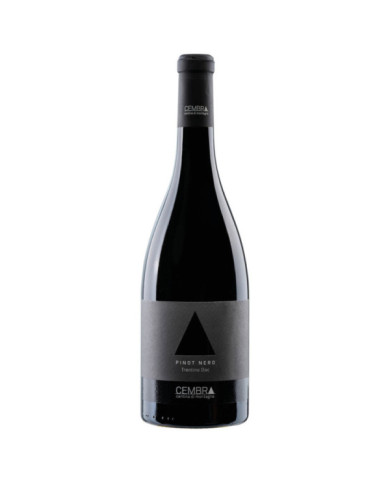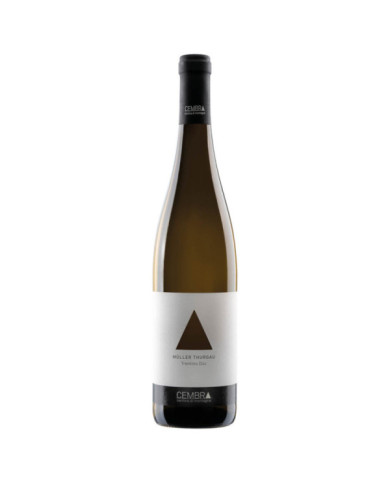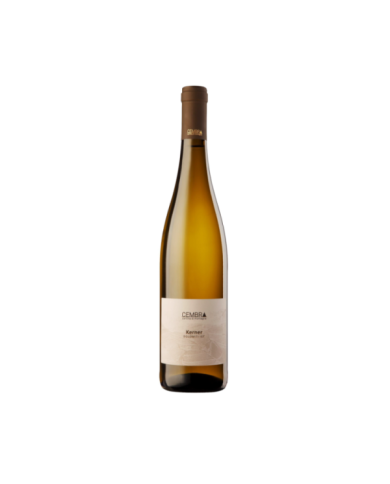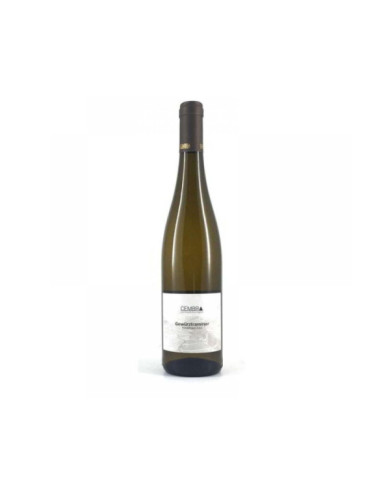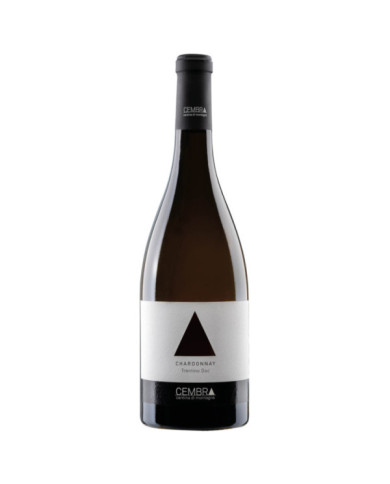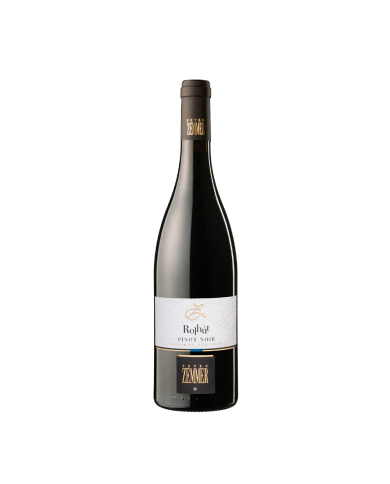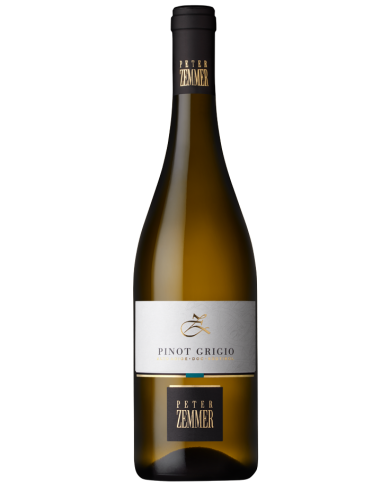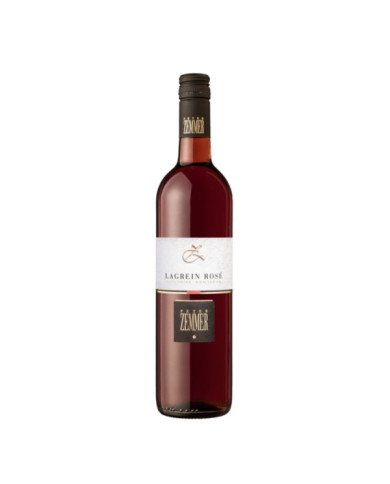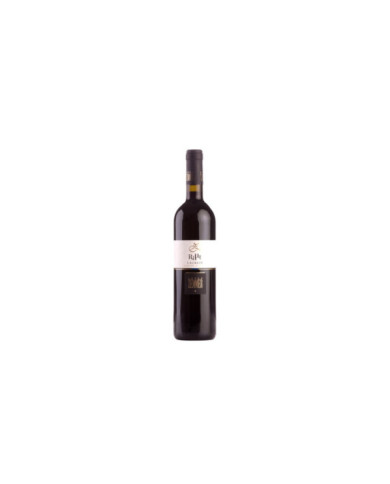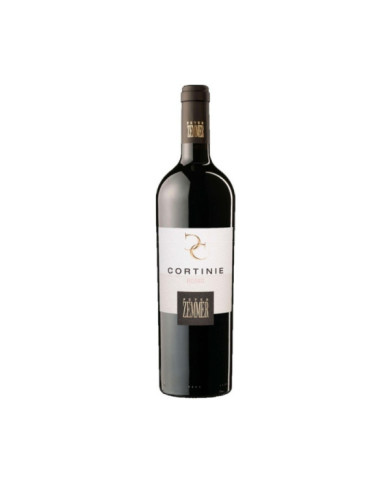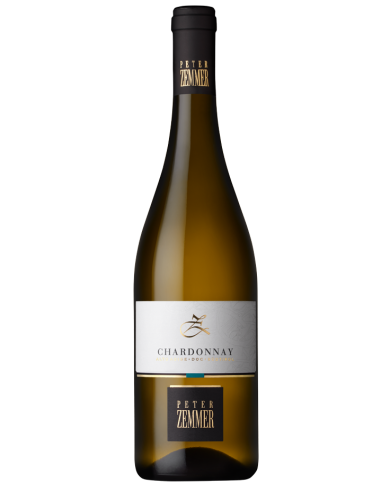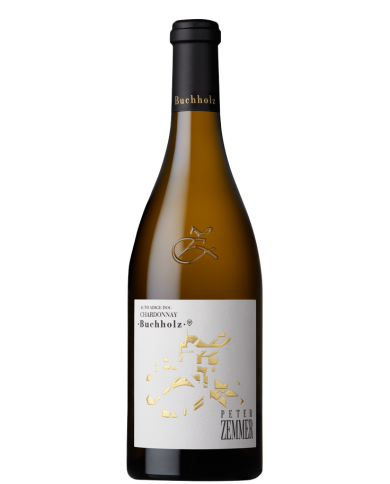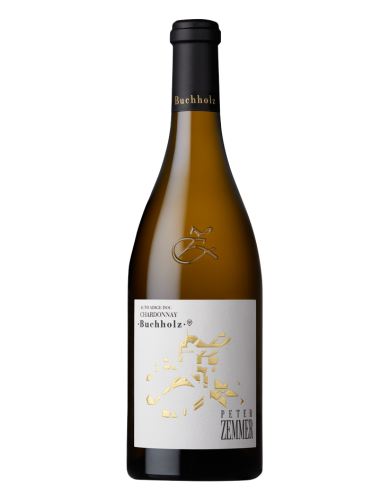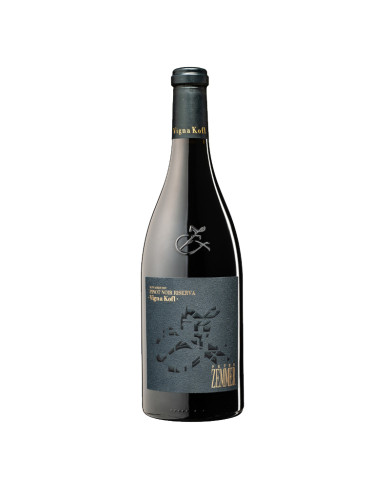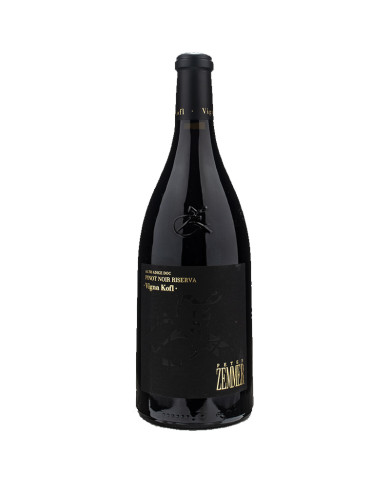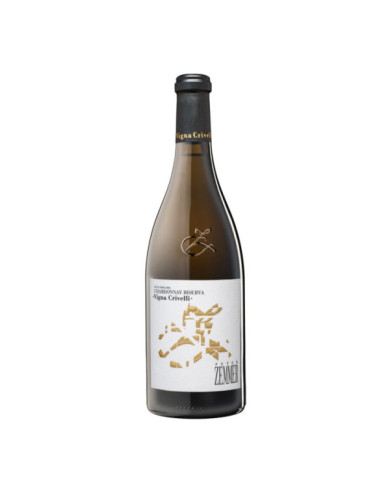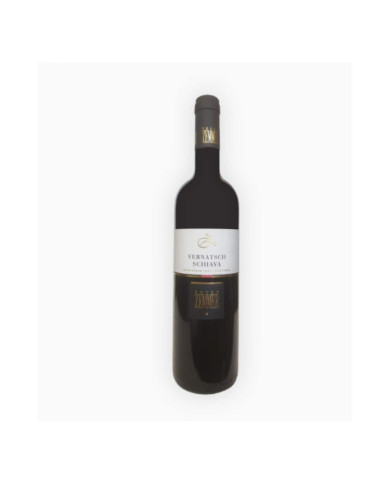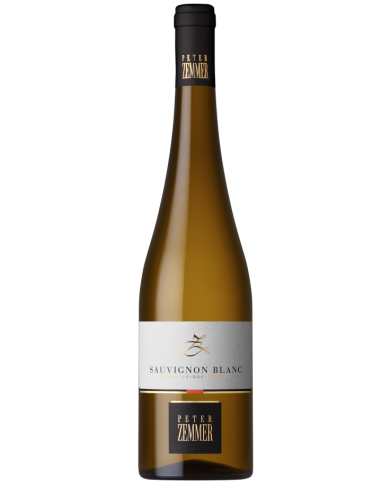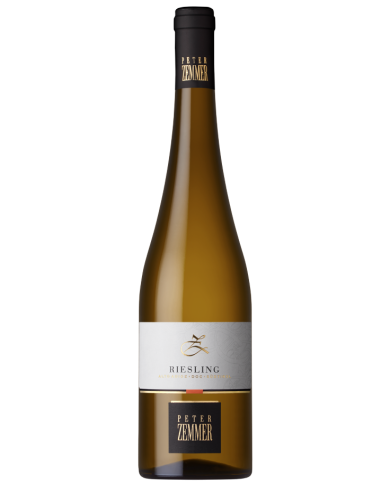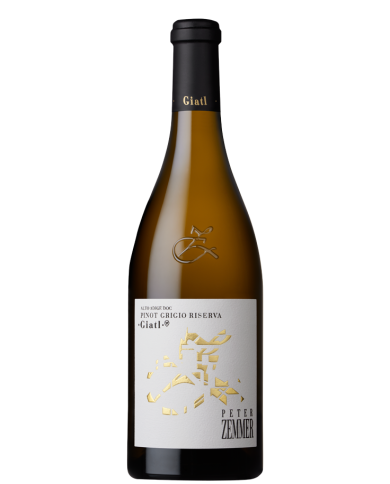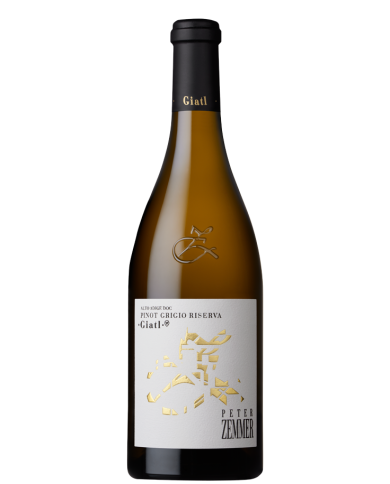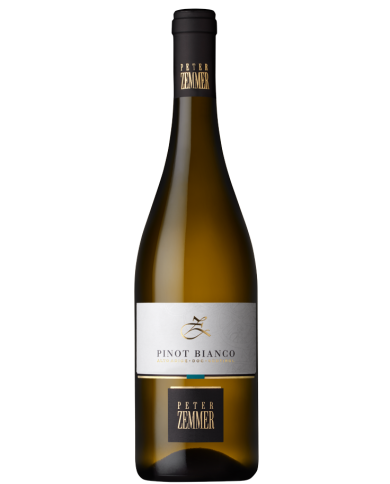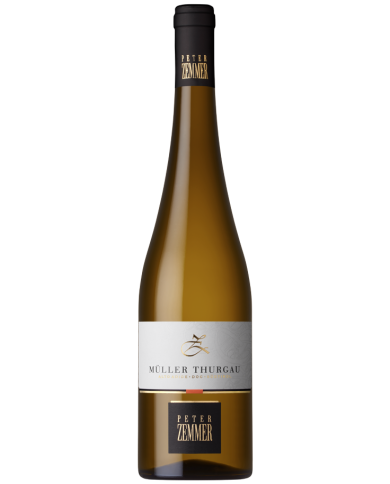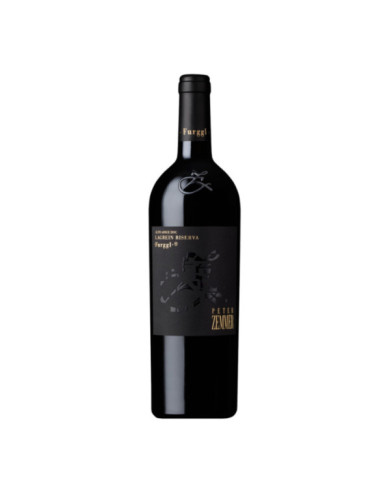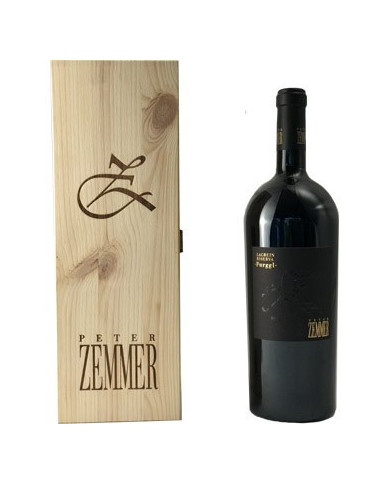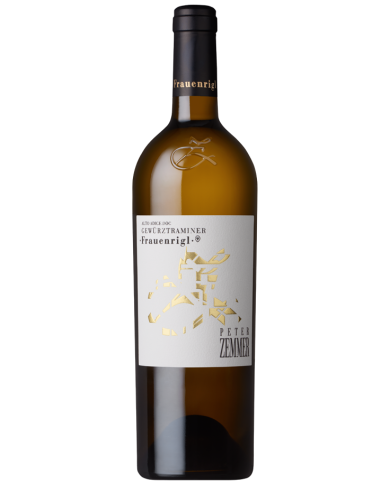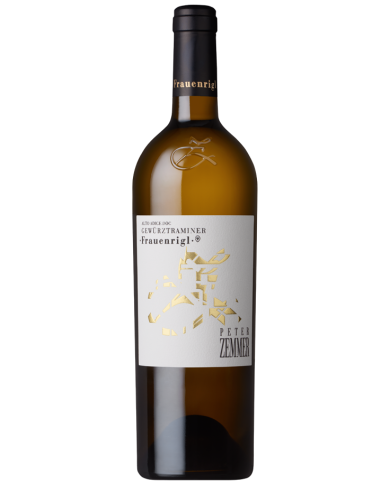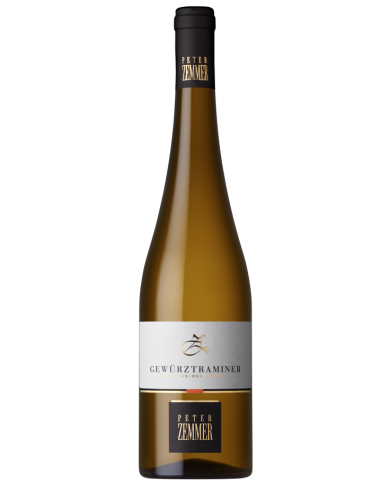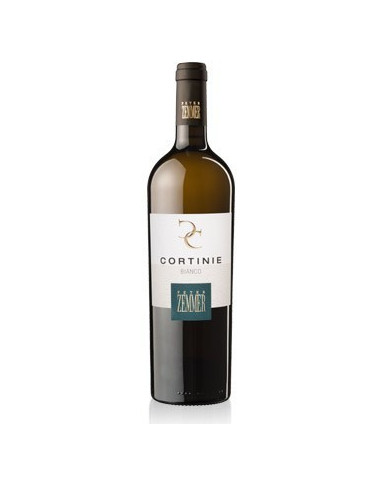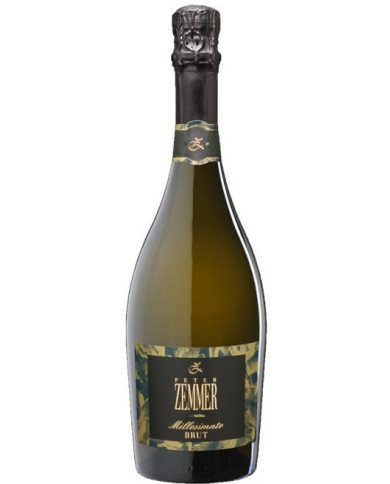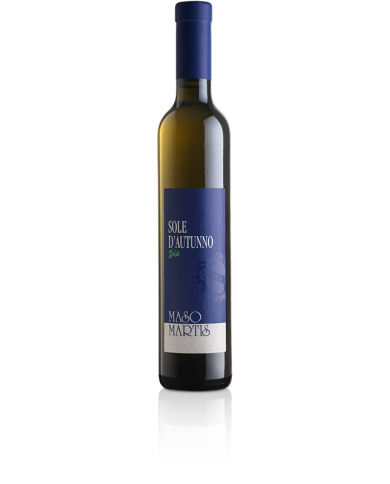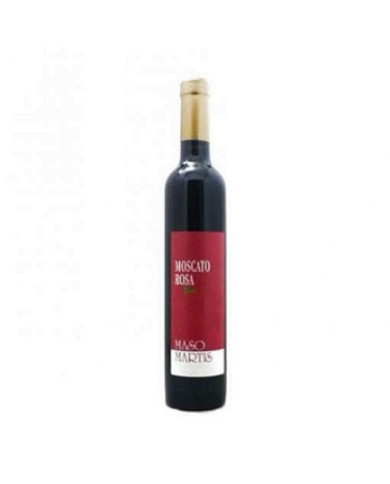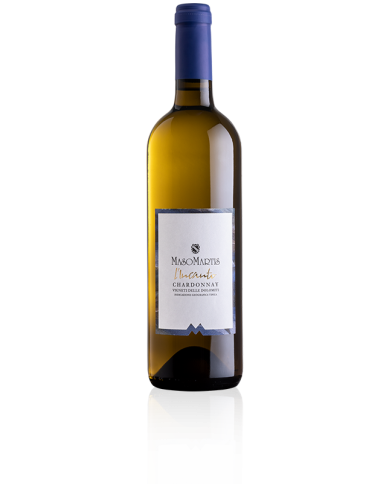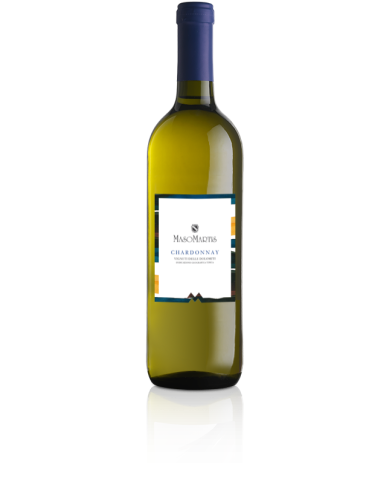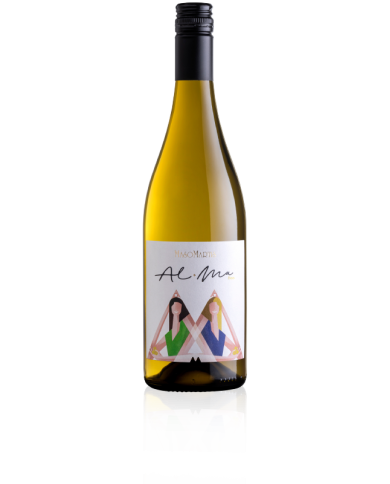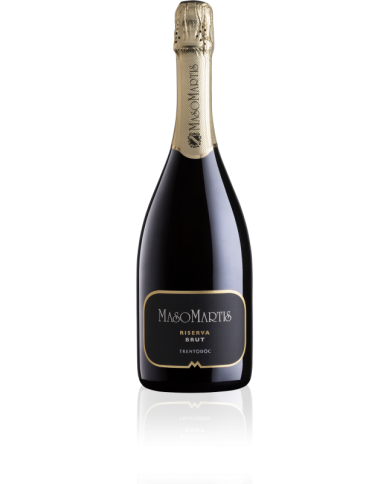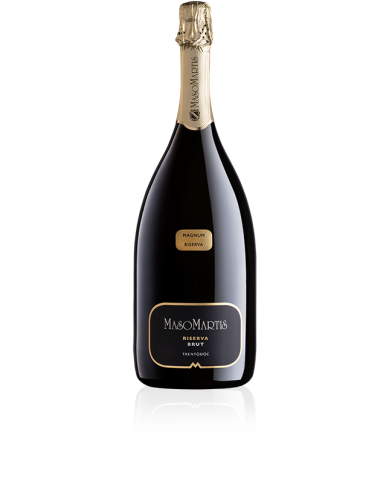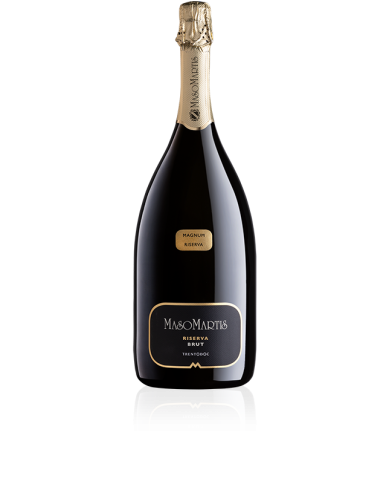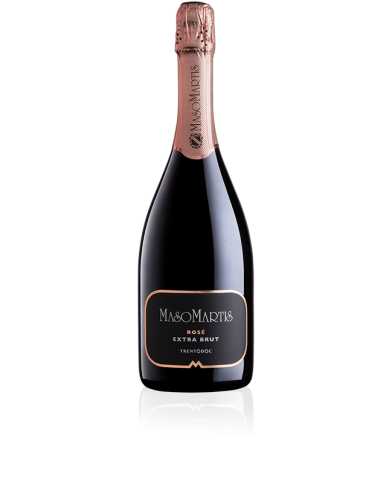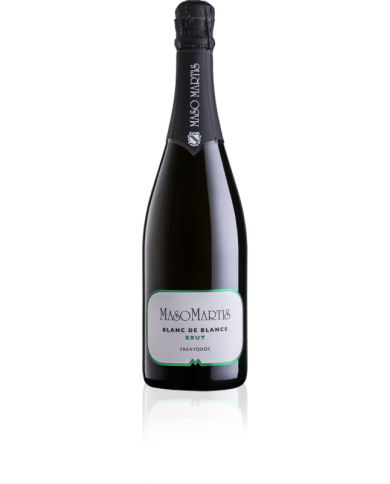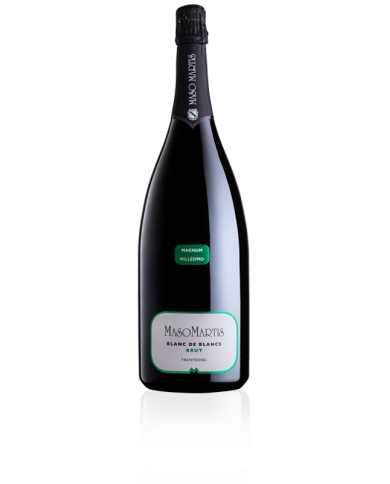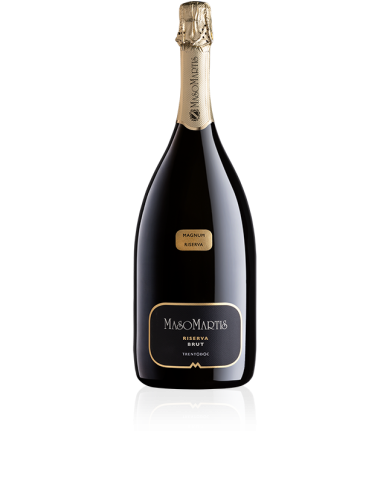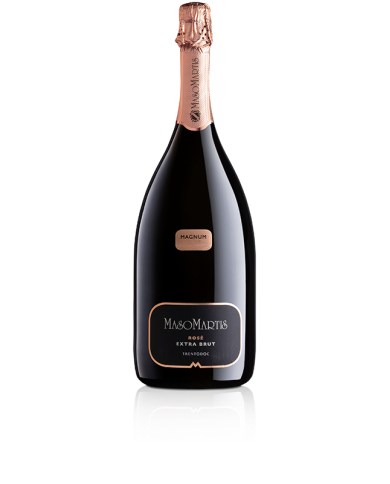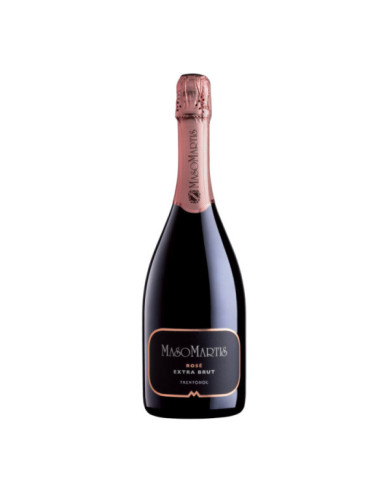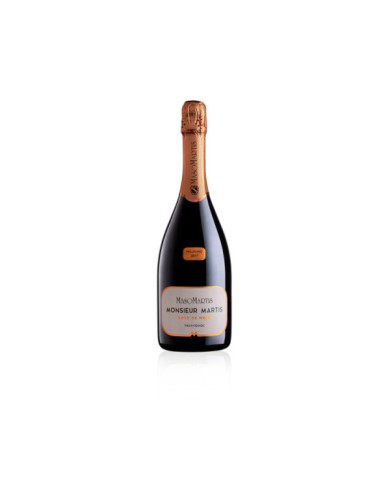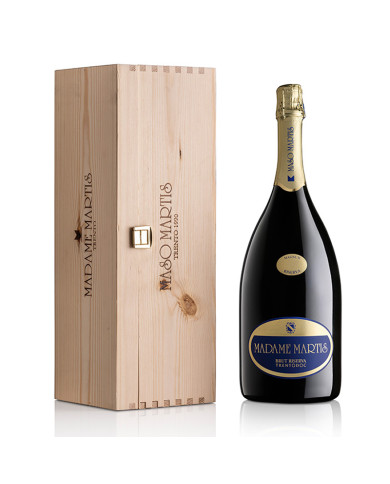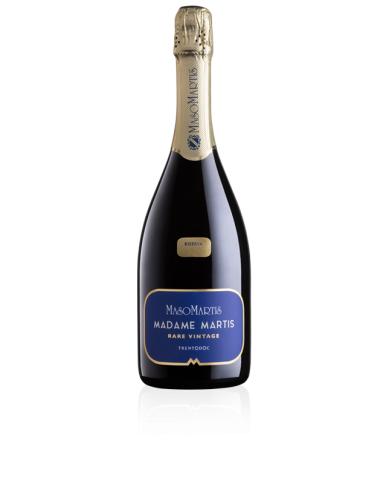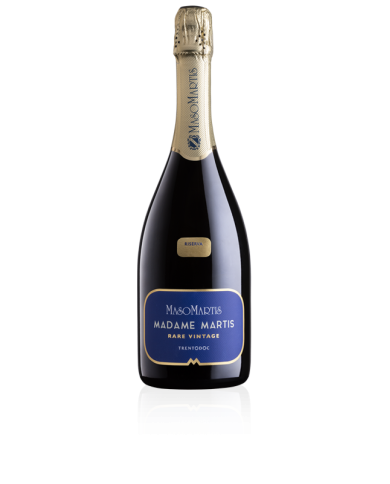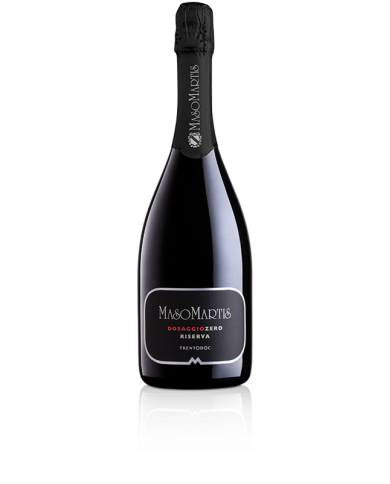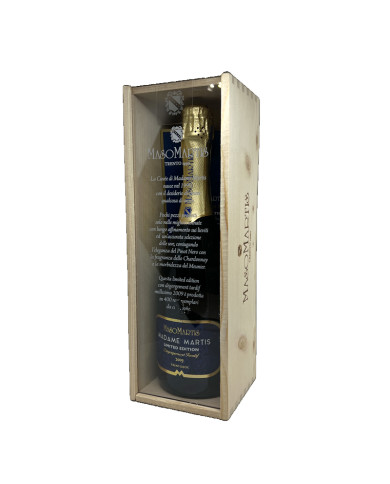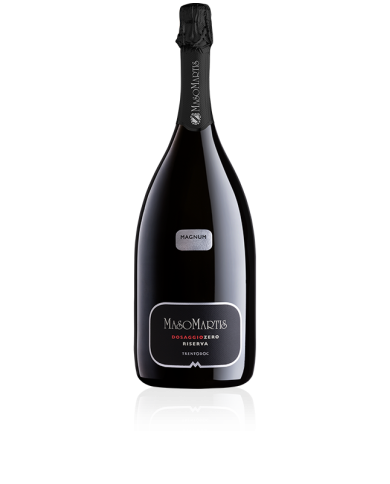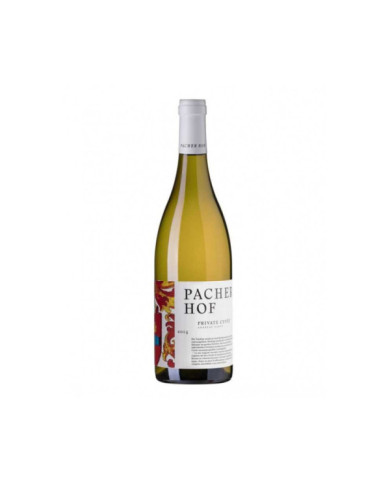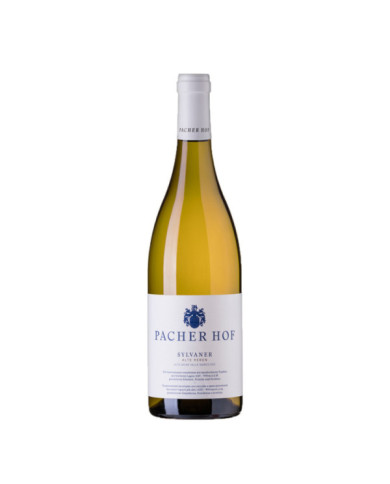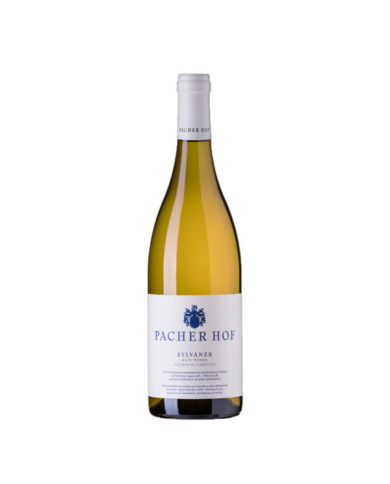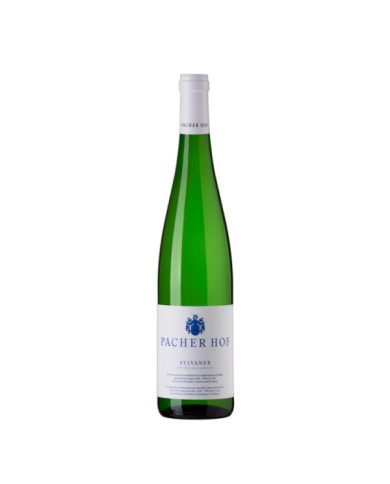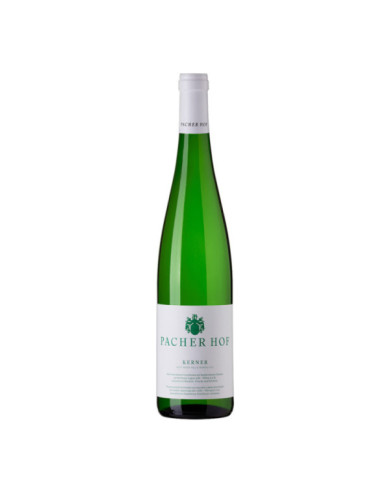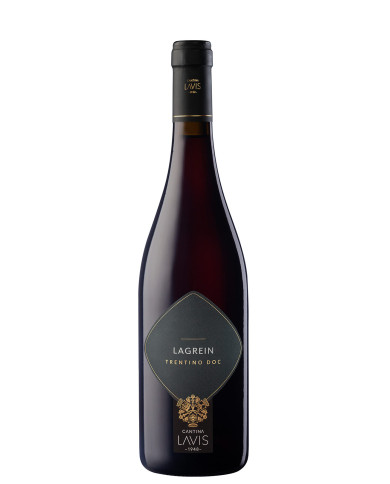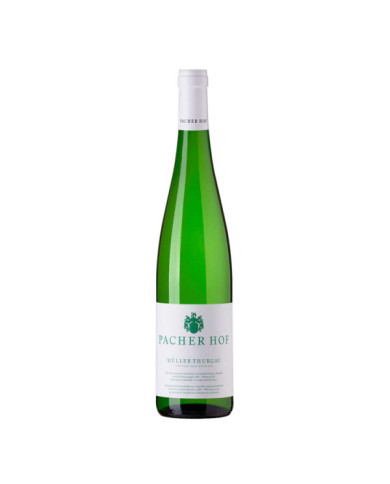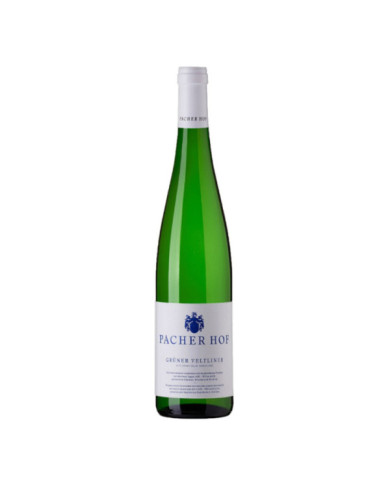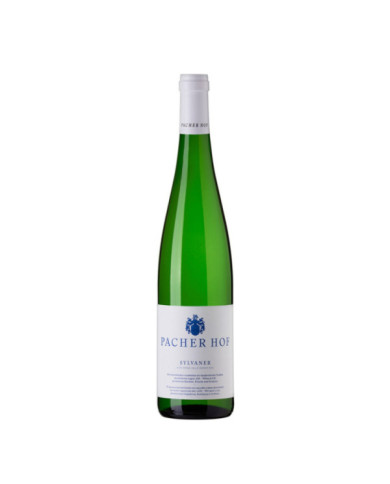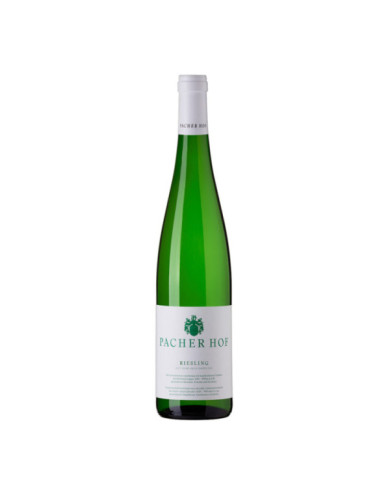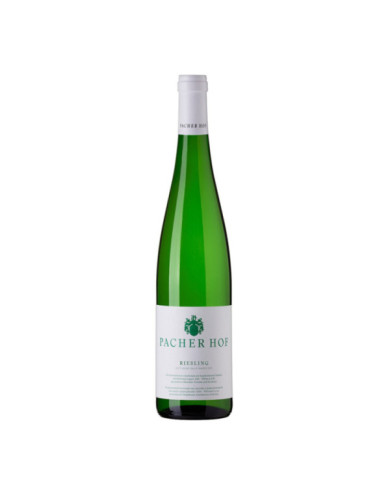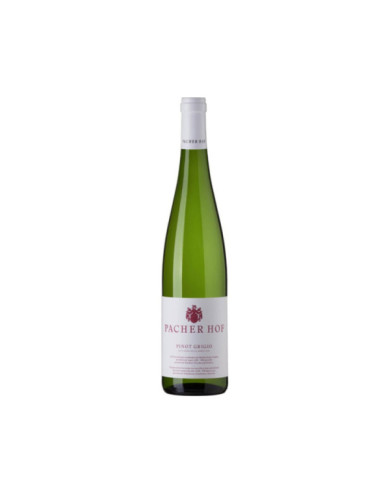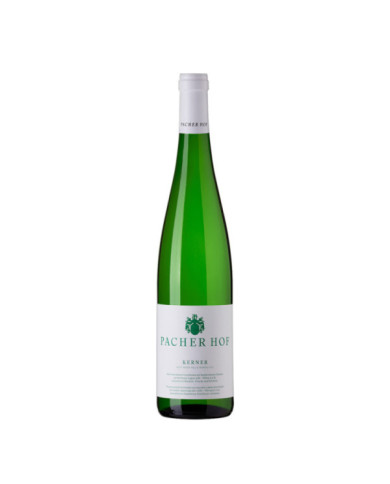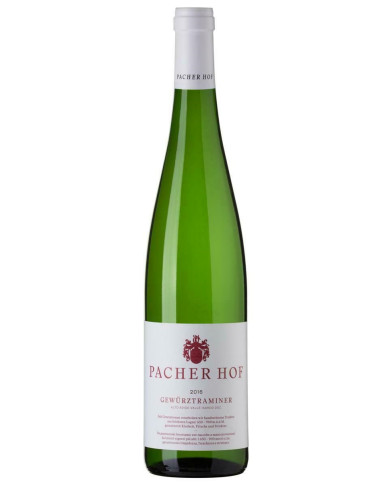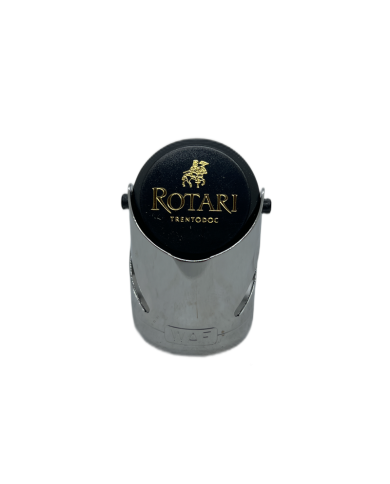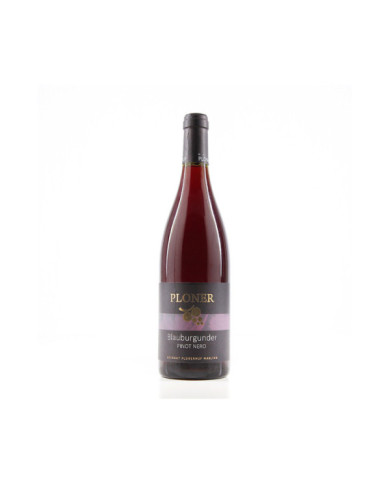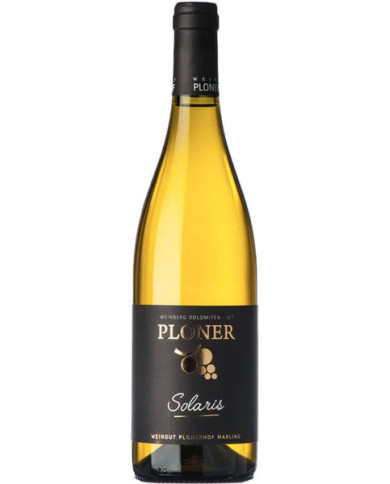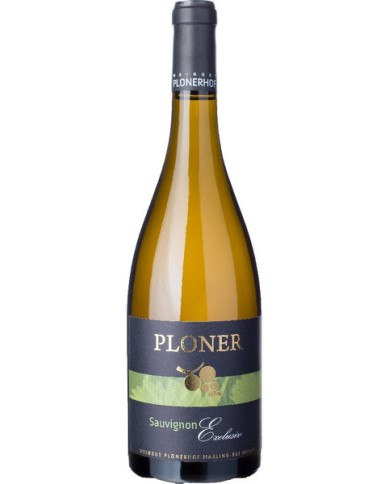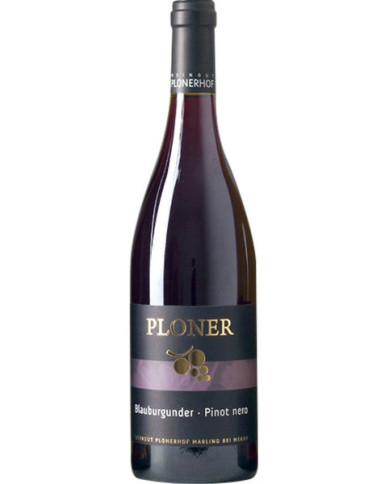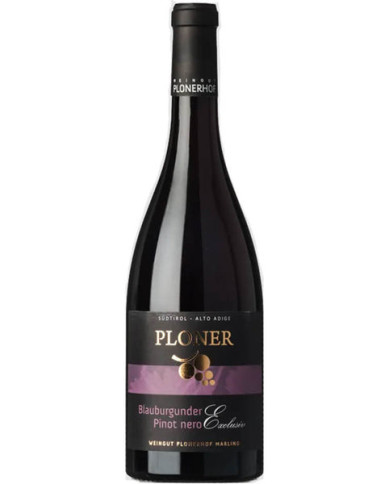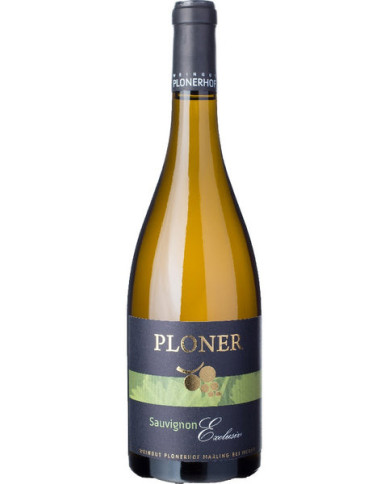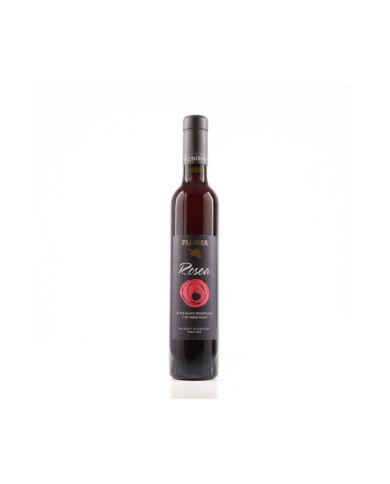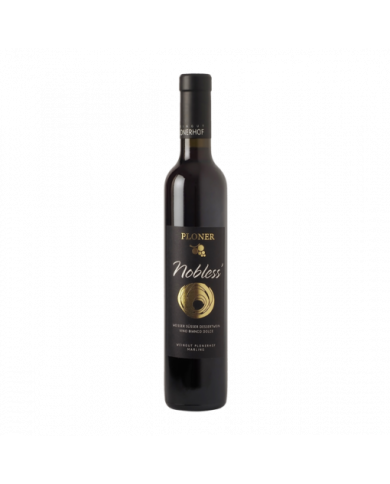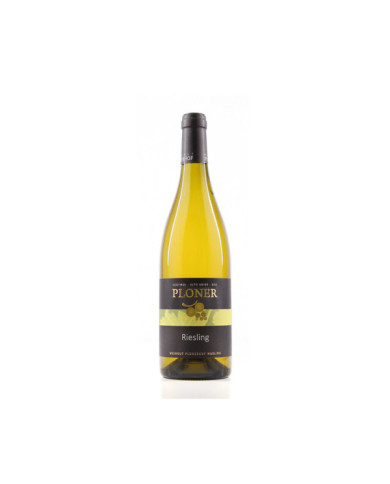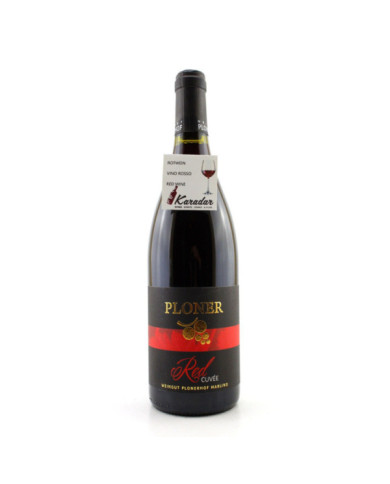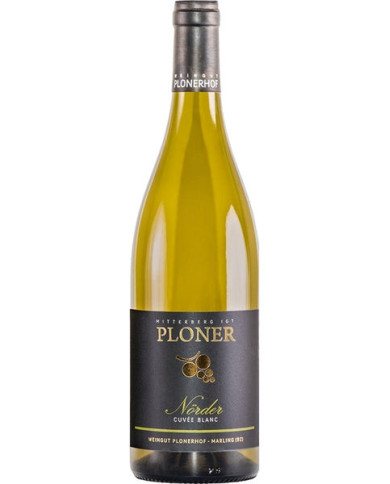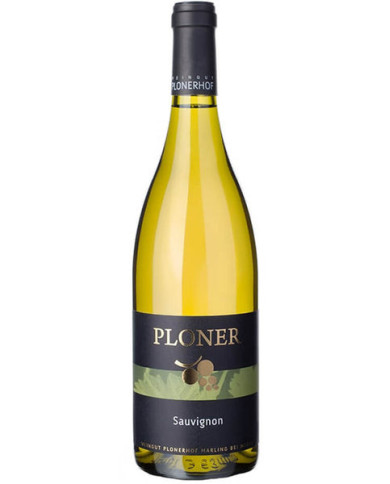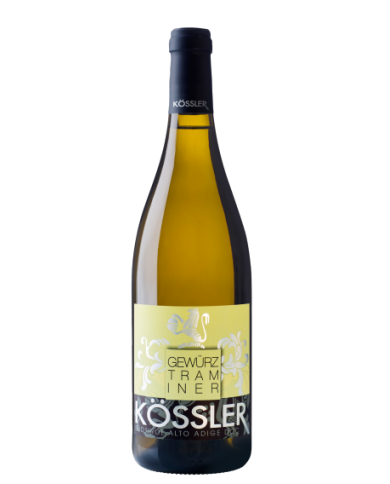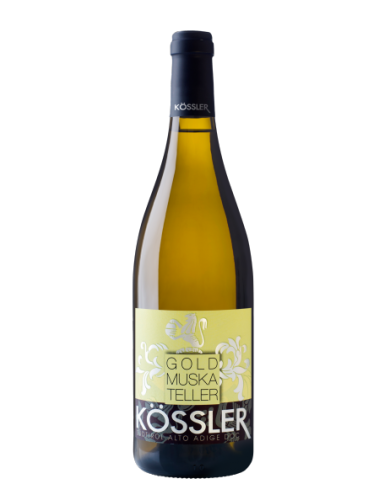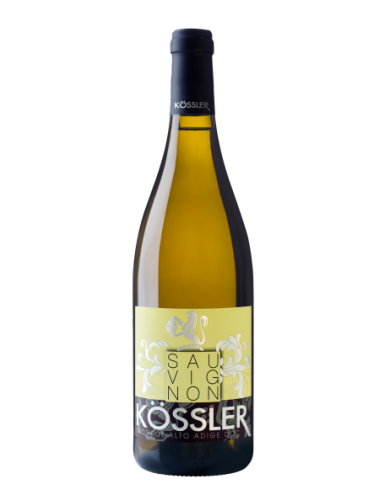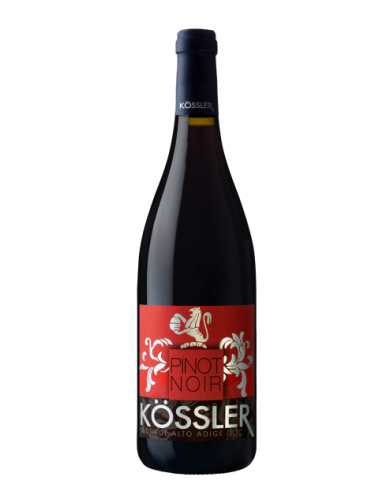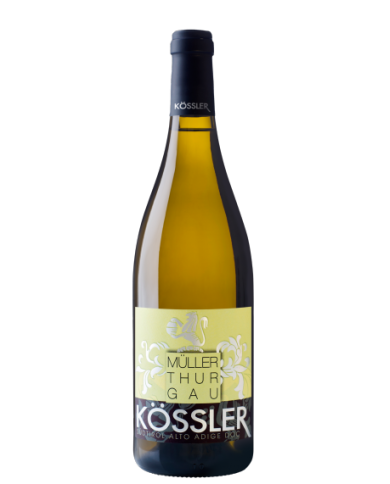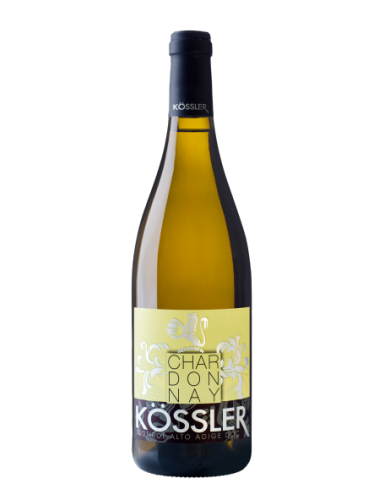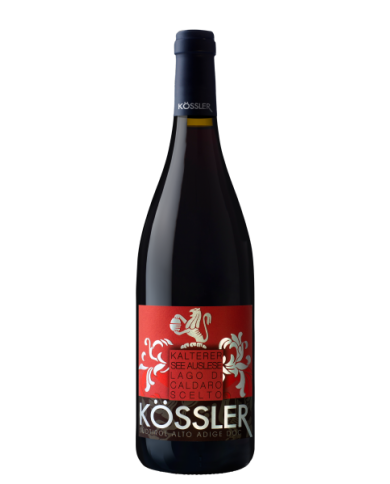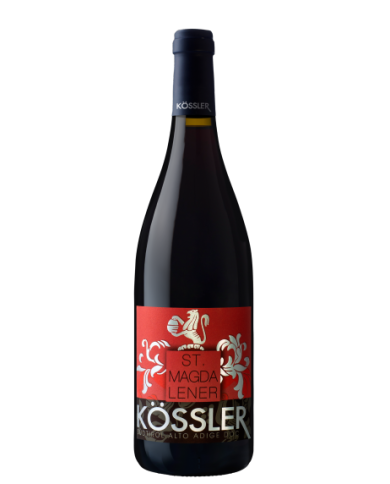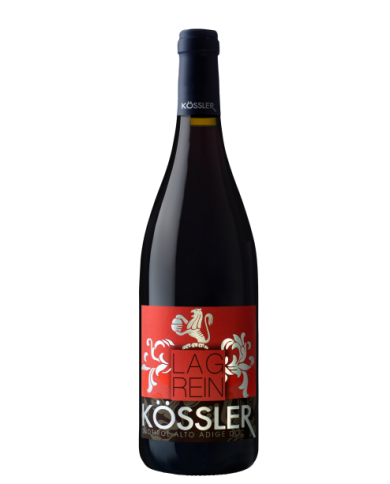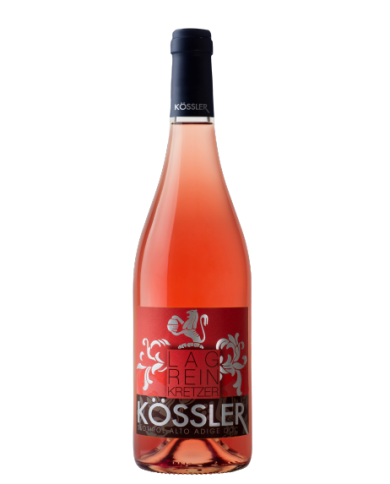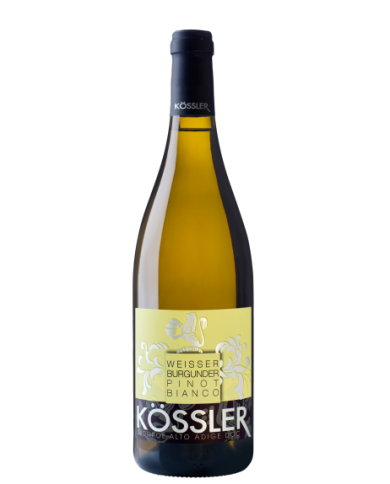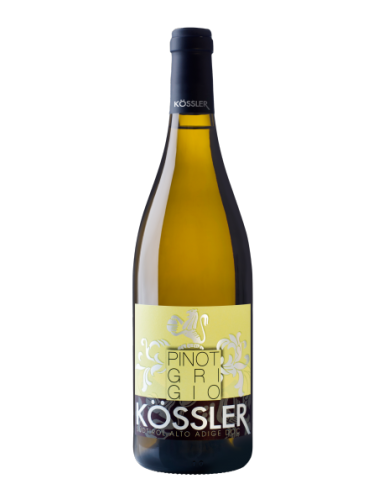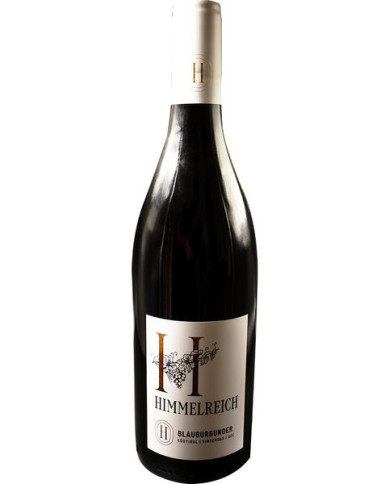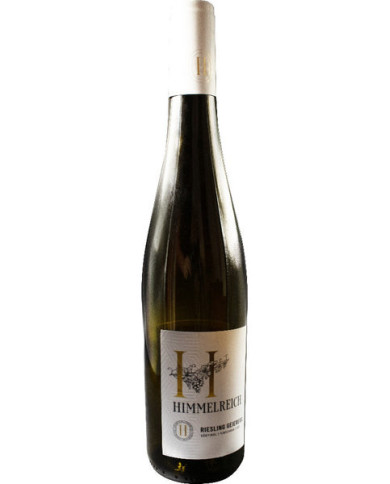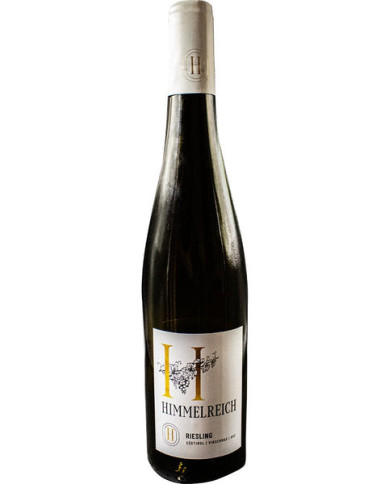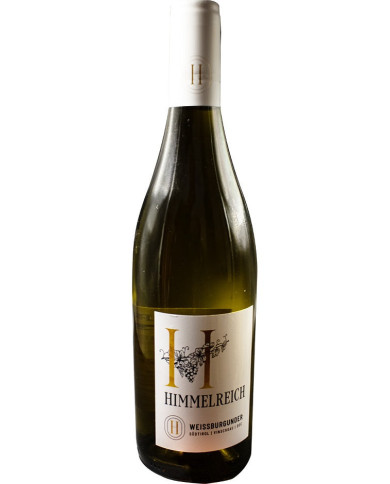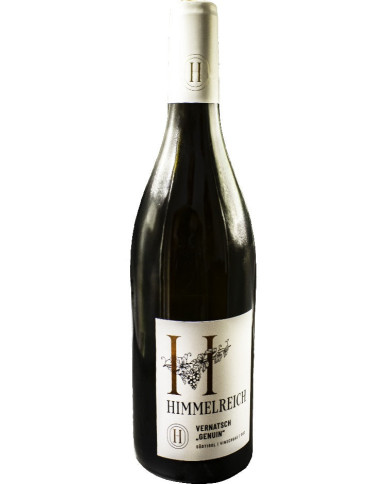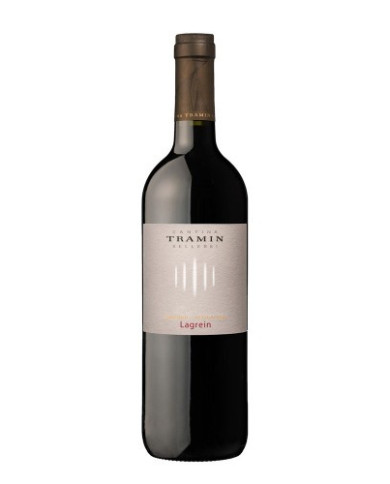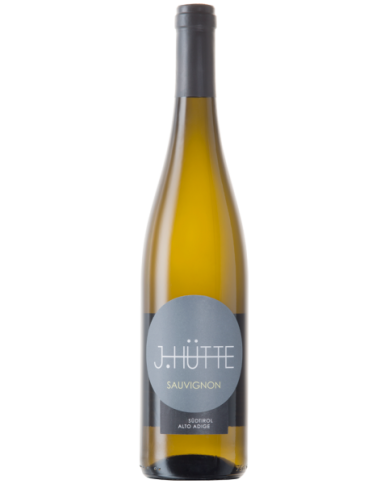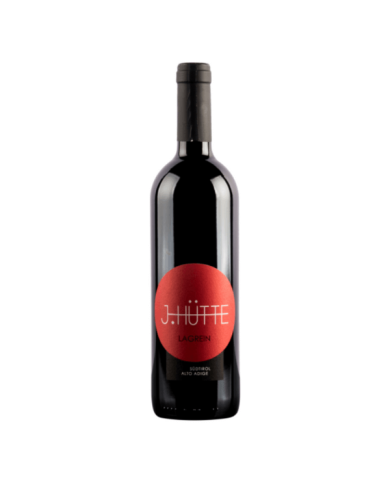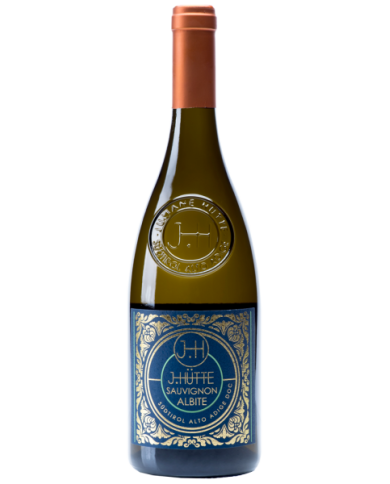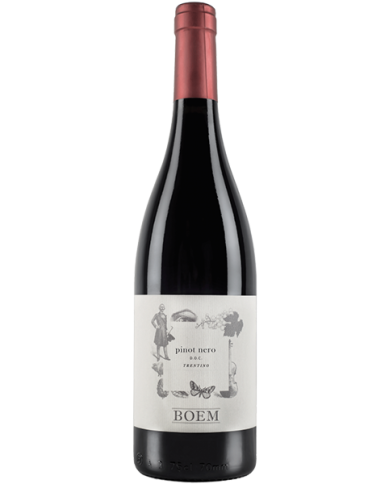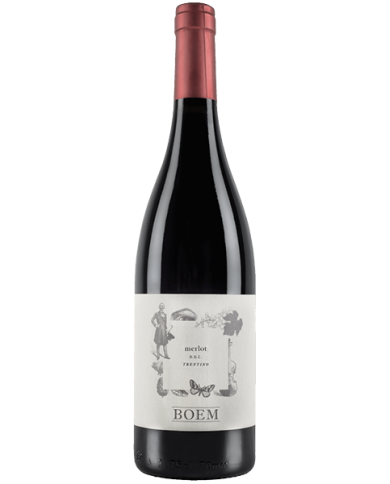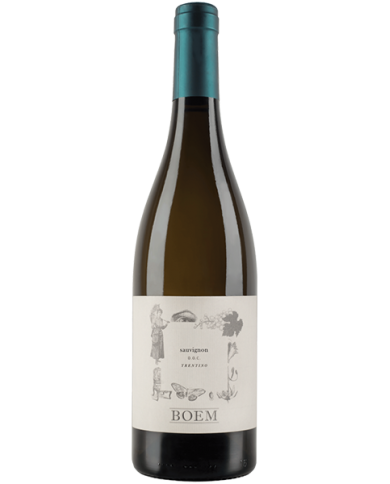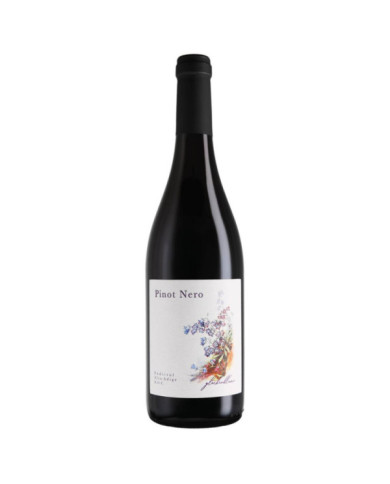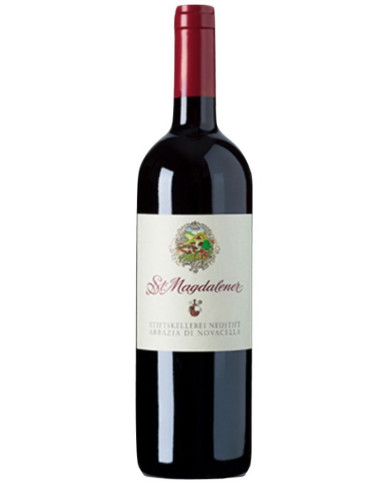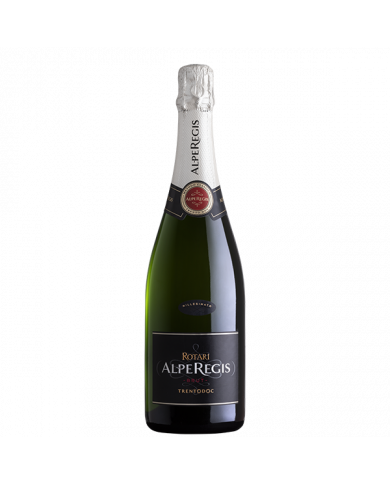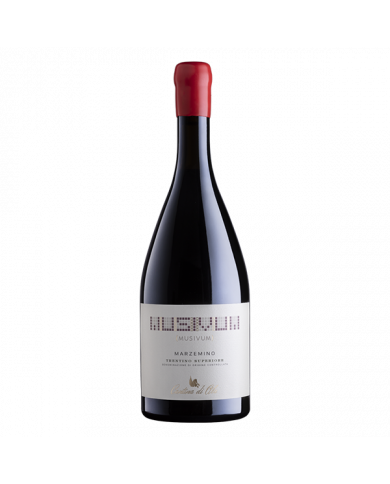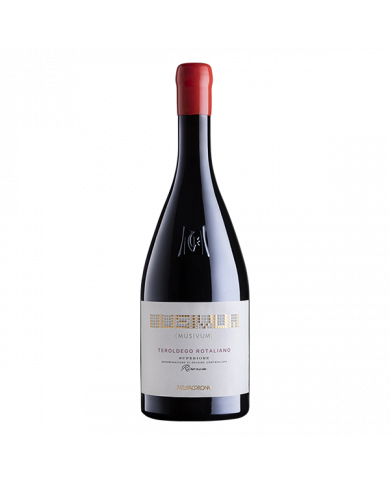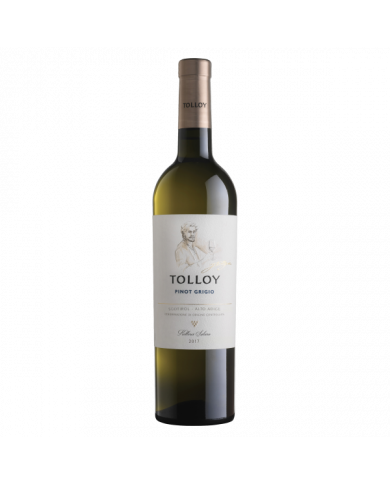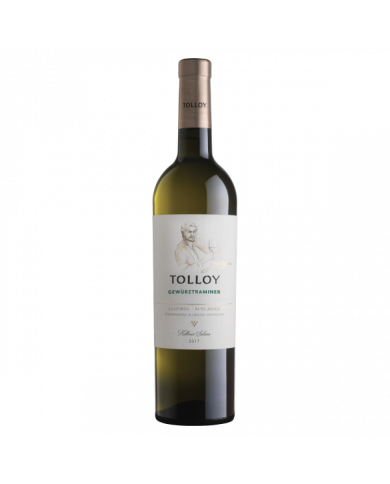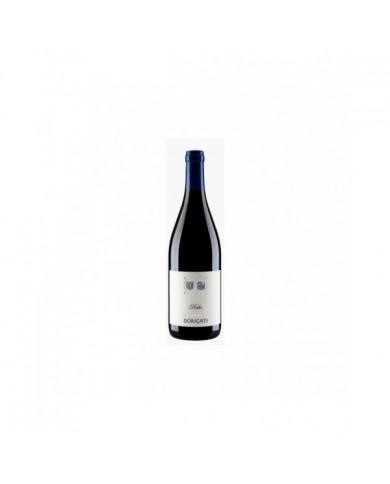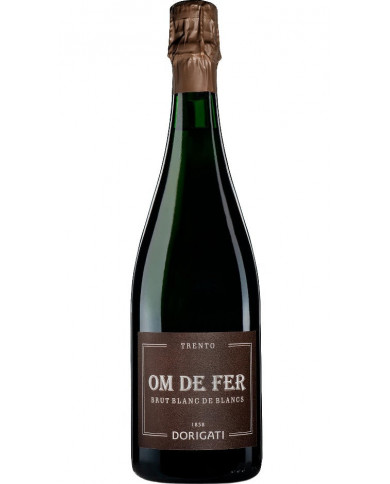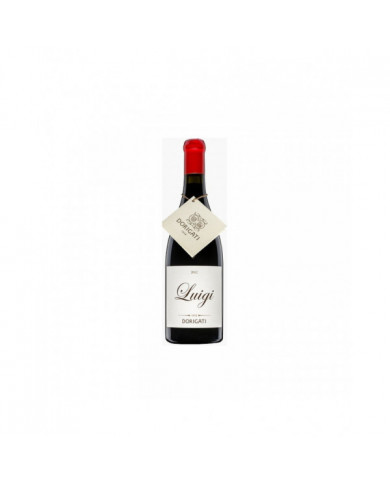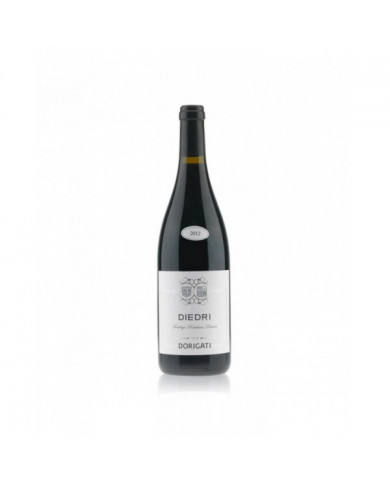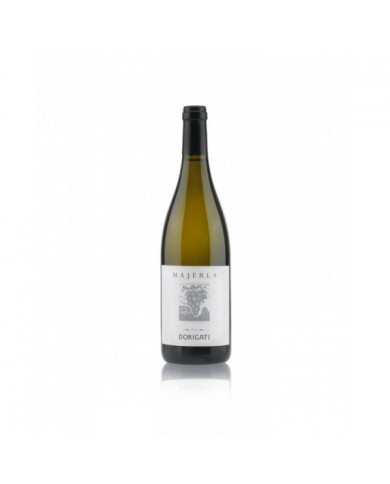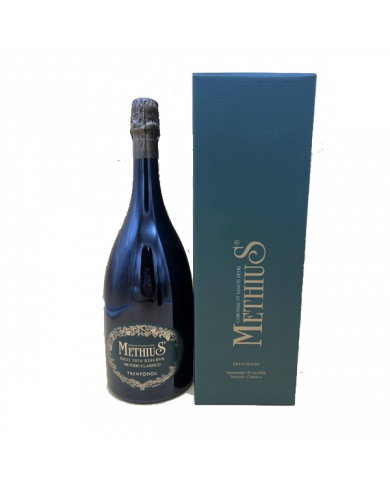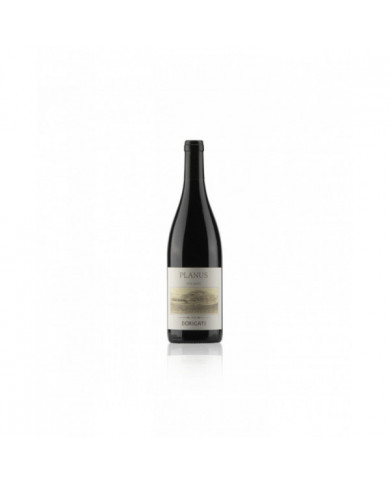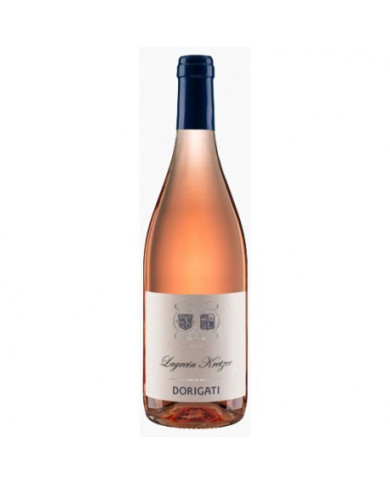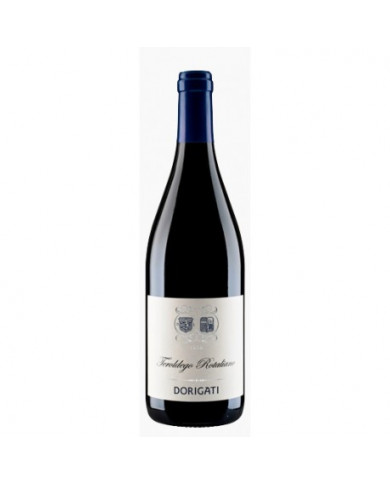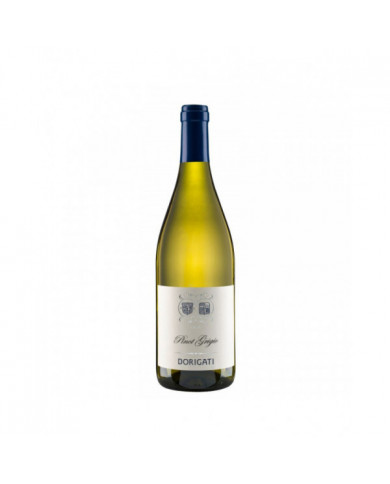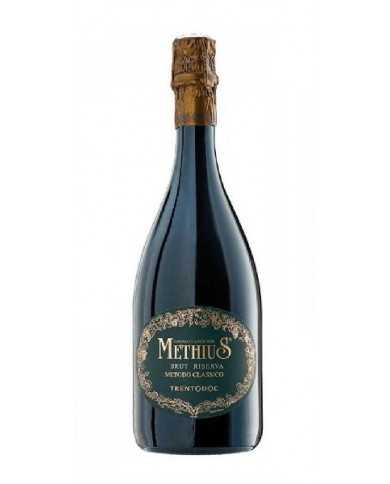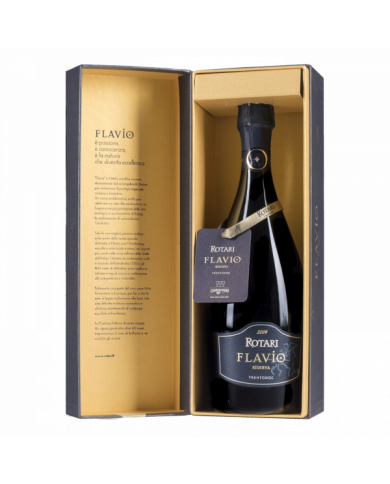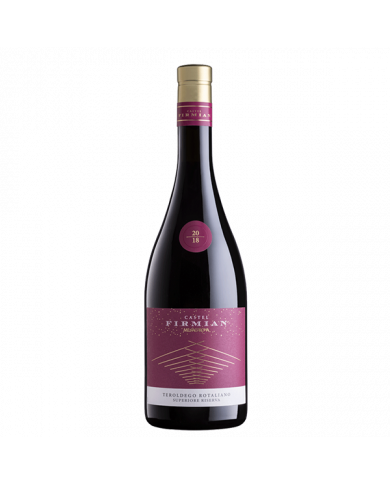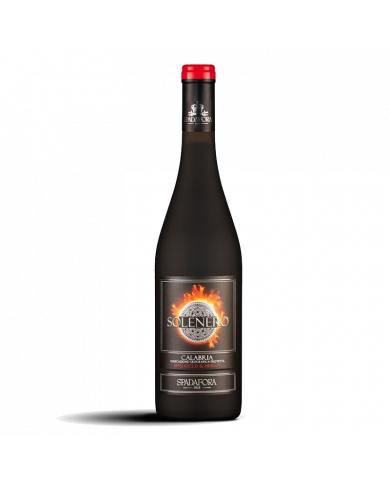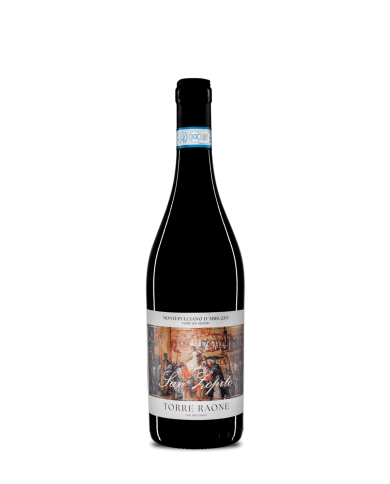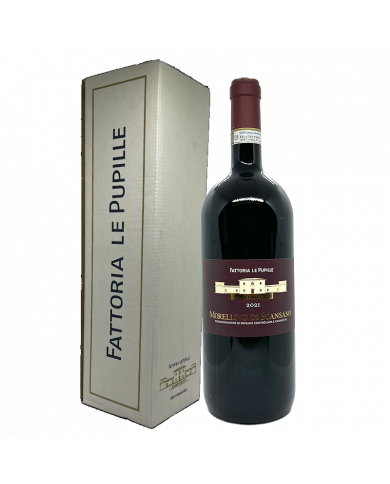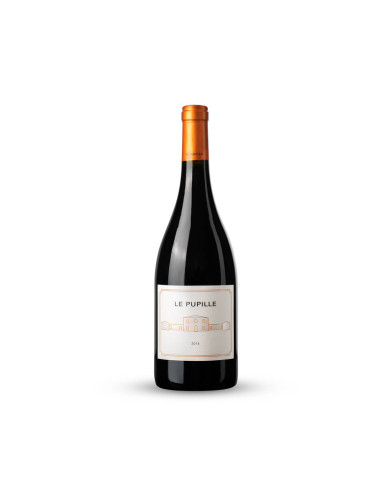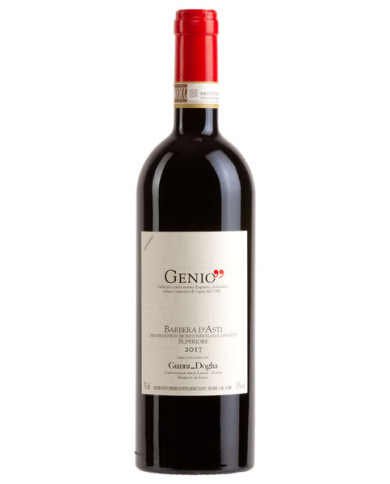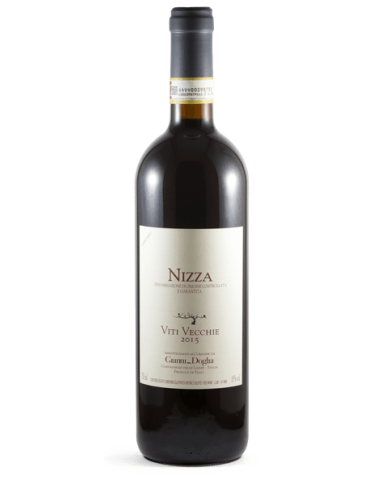At the gates of the Val di Cembra, where once a farm guarded an area nestled between the woods and the steep valley carved out by the Avisio, today stands a precious organically managed vineyard which gives rise to grapes rich in finesse and character .
In the mountain vineyards the grapes that make up Mandolaia are dried naturally on the vines, taking advantage of the natural temperature changes and the cold of late autumn.
In 1991 he wrote the story. To this day it embodies the path of dedication, passion and research of Cantina di La-Vis, enclosed in a blend of the Teroldego, Lagrein and Merlot varieties located in the most suitable vineyards of the Avisiane Hills and which reaches its maximum expression in the glass. Portrait is the great Red of La-Vis.
ŌĆ£Le SelezioniŌĆØ are the result of the zoning project that has guided the winery's production philosophy for over 30 years. Selected areas, suitable vineyards and productive excellence temper unique wines capable of expressing the best interpretation of the Avisiane Hills.
ŌĆ£Le SelezioniŌĆØ are the result of the zoning project that has guided the winery's production philosophy for over 30 years. Selected areas, suitable vineyards and productive excellence temper unique wines capable of expressing the best interpretation of the Avisiane Hills.
The "Gemma" is a Trentino Lagrein Rosato from Tenuta San Leonardo which pays homage to Gemma de Gresti, the historic and courageous owner of the estate in the early 1900s who saved countless lives during the Great War. The maturation in steel preserves the varietal fragrance of the grapes, allowing a purely fruity bouquet of raspberries, cherries, strawberries and pleasant floral sensations to express. The sip plays on freshness, delicacy and agility, with a mineral frame
Carmenere di San Leonardo is a very elegant and pleasantly herbaceous red wine with an international soul. It is vinified in concrete tanks and aged for up to 24 months in barrique. The aromas evoke green pepper, balsamic herbs, pepper and berries. On the palate it is full-bodied, intense, slightly herbaceous and persistent
Carmenere di San Leonardo is a very elegant and pleasantly herbaceous red wine with an international soul. It is vinified in concrete tanks and aged for up to 24 months in barrique. The aromas evoke green pepper, balsamic herbs, pepper and berries. On the palate it is full-bodied, intense, slightly herbaceous and persistent
Wine symbol of the estate, it has its roots in its millenary history. A classic Bordeaux cut of aristocratic elegance and extraordinary longevity.
Wine symbol of the estate, it has its roots in its millenary history. A classic Bordeaux cut of aristocratic elegance and extraordinary longevity.
Wine symbol of the estate, it has its roots in its millenary history. A classic Bordeaux cut of aristocratic elegance and extraordinary longevity.
Wine symbol of the estate, it has its roots in its millenary history. A classic Bordeaux cut of aristocratic elegance and extraordinary longevity.
Wine symbol of the estate, it has its roots in its millenary history. A classic Bordeaux cut of aristocratic elegance and extraordinary longevity.
Wine symbol of the estate, it has its roots in its millenary history. A classic Bordeaux cut of aristocratic elegance and extraordinary longevity.
Also known as Traminer Aromatico, Gew├╝rztraminer was already known in the thirteenth century for its aromatic qualities and its ability to drink, and is today, without a doubt, the most famous and well-known South Tyrolean wine in the world. In all likelihood its origins are to be found in Termeno (Tramin), from which the name "Traminer" derives.
The vines are grown with the simple Trentino pergola in sandy loam and clay loam soils.
It goes well with red meats, tongue, stewed snails, boiled meats and aged cheeses. Serve at 18┬░C.
An eclectic Riesling that finds in the altitude and porphyritic soils the optimal conditions for expressing its intriguing personality.
The high altitude of the Cembra Valley is perfect for producing elegant and not too heavy wines. The Teroldego of the Cantina di Montagna is a clear example of this.
Sauvignon blanc is grown in the Cembra Valley in some particularly suited micro-areas, in which the high daily thermal excursions allow to preserve the labile aromatic component.
The Cembra Pinot Noir is born in the Valle di Cembra vineyards, in the heart of Trentino Alto Adige, located at an altitude of 500-600 m. slm
The Cembra Pinot Noir is born in the Valle di Cembra vineyards, in the heart of Trentino Alto Adige, located at an altitude of 500-600 m. slm
Created in Weinsberg (Germany) around 1930, Kerner is the result of a crossing of Schiava and Riesling. It prefers light, gravelly and sandy soils on the highest slopes and exposed to the sun, such as those of the Cembra Valley.
Color Golden yellow Floral and spicy aroma of cloves and nutmeg. Taste full and consistent, it envelops the whole palate.
The Cembra Chardonnay is born in the Valle di Cembra vineyards, in the heart of Trentino Alto Adige, located at an altitude of 500-650 m. slm
Hence the denomination chosen for this geographical entity from the historical name "Buchholz" for the slopes of the valley above Salorno in the Bassa Atesina, already mentioned in the historical cartography of the land register of 1858 is documented.
The Pinot Noir Riserva "Vigna Kolf" is a full-bodied and intense red wine with an elegant and refined profile, born at an altitude of 1030 meters from a single vineyard. Aged for one year in barrique, it expresses aromas of wild berries, cherry and strawberry, followed by notes of cocoa, vanilla and noble woods. On the palate, despite the firm and soft structure, it is agile and vibrant, with soft tannins and a gentle freshness
The Pinot Noir Riserva "Vigna Kolf" is a full-bodied and intense red wine with an elegant and refined profile, born at an altitude of 1030 meters from a single vineyard. Aged for one year in barrique, it expresses aromas of wild berries, cherry and strawberry, followed by notes of cocoa, vanilla and noble woods. On the palate, despite the firm and soft structure, it is agile and vibrant, with soft tannins and a gentle freshness
It grows in low shoots on guyot systems at an altitude of 450 m slm level in Pochi di Salorno. The favorable position of the vineyard, the very low yield per hectare and the ideal temperature range between day and night are the prerequisites for bringing these grapes to an ideal ripening.
Peter Zemmer's Riesling is a very captivating white wine from South Tyrol thanks to its subtle acidity and soft roundness. It has a light yellow color with golden reflections. The aromatic spectrum is very broad, with aromas of citrus, lychee, aromatic herbs and white flowers. The sip has a nice texture and roundness. Very fresh and enjoyable.
AVAILABLE IN THE SHOP Download the technical sheet in .pdf format A classy product with a delicate pink color, with aromas of small berries, currants, raspberries and strawberries and delicate hints of sweet almond, full-bodied and velvety.
There are only 100 bottles of this exceptional 2009 vintage classic method, which the company wanted to produce with its own best grapes, combining the elegance of Pinot Noir with the fragrance of Chardonnay and the softness of Meunier. "Madame Martis" is the successful synthesis of the precious elements that have always characterized the harmonious and decisive style of Maso Martis sparkling wines.
This bottle of the 2011 vintage is one of the very few produced by Maso Martis with a careful selection of its grapes, combining the elegance of Pinot Noir with the fragrance of Chardonnay and the softness of Meunier. 9 years of very long aging in the bottle are his style signature.
This bottle of the 2009 vintage is one of the very few produced by Maso Martis with a careful selection of its grapes, combining the elegance of Pinot Noir with the fragrance of Chardonnay and the softness of Meunier. "Madame Martis" is the successful synthesis of the precious elements that have always characterized the harmonious and decisive style of Maso Martis sparkling wines.
DosaggioZero is a classic method with no residual sugar, with an intense body and aromas, mineral, with a robust and decisive character. One of the first pas dos├© classic method produced in Trentino.
The Pacherhof Private Cuv├®e Andreas Huber is an intimate gift from the winery's winemaker. A white wine that manifests its conception of a great interpreter of the Dolomites capable of reaching important peaks of balance. Floral and delicate on the nose, it whispers notes of elderberry and unfolds spicy sensations. Mineral and savory fluid, characteristics directly connected with the particular composition of the mountain soils, of beautiful elegance and intensity
For over 70 years, the South Tyrolean vine has naturalized on the gentle slopes of Avisio. In this context, the Lagrein unleashes its full potential on the warmer and better exposed to the sun slopes that embrace the Municipality of Lavis. Strong purplish hues embellish the ruby red. Refined olfactory perceptions follow one another in the glass and the bouquet reveals intriguing notes of raspberries, blueberries and violets. On the palate it is warm and velvety, with soft and sweet tannins.
Pacherhof's Muller Thurgau is a wine that blossoms within the terroir of the Valle d'Isarco. It is made in a terroir mainly based on sand and clay, where day and night alternate with excellent temperature ranges and good ventilation. The must ferments slowly at a low temperature in stainless steel tanks. The final stage of aging takes place in steel on the noble lees for 6 months. Once this maturation is complete, the wine is ready to be bottled and placed on the market.
Pacherhof's Sylvaner is a semi-aromatic white wine of medium body and good freshness, aged for a few months in large barrels. It has a fine and delicate bouquet of freshly mown hay, herbs, fruit and white flowers. On the palate it is clear, mineral, fresh and fruity, with a nice persistence
Pacherhof's Sylvaner is a semi-aromatic white wine of medium body and good freshness, aged for a few months in large barrels. It has a fine and delicate bouquet of freshly mown hay, herbs, fruit and white flowers. On the palate it is clear, mineral, fresh and fruity, with a nice persistence
White wine with a brilliant straw yellow color with light greenish hues. The nose is fruity with hints of apple and almonds.
Pacherhof's Muller Thurgau is a wine that blossoms within the terroir of the Valle d'Isarco. It is made in a terroir mainly based on sand and clay, where day and night alternate with excellent temperature ranges and good ventilation. The must ferments slowly at low temperature in stainless steel tanks. The final stage of aging takes place in steel on the noble lees for 6 months. Once this maturation is complete, the wine is ready to be bottled and placed on the market.
Pacherhof's Kerner is a clean, precise and vertical wine, with a fresh and light personality, not without tension and aromatic richness. Aromas of citrus fruits, exotic fruit and sweet spices involve the sense of smell while the sip reveals character, softness and great expressive power
Fresh, delicate aroma with floral notes, aromas of ripe exotic fruits and an elegant citrus note. Lively fresh acidity with a pleasant aromatic note in the finish.
Rotari stopper cap for offer the maximum for the conservation of the precious characteristics of wines and sparkling wines.
It is an aromatic variety that has its origins in South Tyrol. Its exclusive and unmistakable aroma owes it to the warm and sunny soils. It is a golden yellow wine with typical aromas reminiscent of rose petals, nutmeg spices and cloves.
This wine is one of the best known products from the Schiava grape. It has a wide range of fruity aromas and stands out for its fullness and roundness on the palate.
Lagrein is a native variety, from which a wine of great character is obtained. It stands out for its intense red color, its aromas of wild berries and cherry. On the palate it expresses a velvety fullness, enhanced by a soft acidity.
This ros├® wine, produced from the Lagrein grape, is typically South Tyrolean, has a ros├® color and a pleasantly fruity note that is gaining more and more interest.
Pinot Grigio, known in Alto Adige as Rul├żnder, is distinguished by its floral aromas and is characterized by a balanced acidity and a fresh and velvety palate.
This Riesling is an excellent white wine produced with grapes from the homonymous vine that grows in Val Venosta. The vines are grown on Monte Sole, where there is less rainfall than the entire western area of Alto-Adige. These particular climatic conditions, and the composition of the morainic soils, give the wines of the Himmelreich cellar their unique and unmistakable character. Its robe is of a bright yellow colour, with intervals of greenish reflections. As it enters the glass, Riesling releases a multifaceted bouquet, the first scent that is perceived is sweet and ripe yellow peach. Notes of pineapple with the right point of ripeness, prickly pears and fresh grapefruit follow immediately afterwards. As it passes, the palate is filled with minerality, its juicy and exotic taste is incomparably mineral and refreshing. This fresh white wine with a delicious taste goes perfectly with light appetizers, fish in general and seafood, but is also perfect with Asian dishes.
The result of a merger, which took place in 2001, between the Cantina Produttori Santa Maddalena and the Cantina Produttori Gries, this kaleidoscopic winery offers an incredible range, complete in the multiplicity of products and refined in the interpretation of the territory. The quality standard is truly impressive and does not fail to satisfy any palate, even the most demanding one, with the right attention to both native and international vines. A splendid example of quality is this Sauvignon, a semi-aromatic vine, characterized by a great variety of aromas, here incredibly enhanced by the warm, sandy soils and the breezy climate, which constitute the ideal terroir for a great wine.
With a rich range of labels with attention to the smallest details, the J.H├╝tte winery, in the province of Bolzano, has managed in a short time to reach a substantial production volume of out of the ordinary quality, which sees the coexistence of native grapes of the area, such as Moscato Giallo , Lagrein and Gew├╝rztraminer with the international Chardonnay, Pinot Noir and Sauvignon. A mix of sandy and morainic soils, accentuated temperature variations and the support of the Bolzano winery combine to create measured and incisive wines, elegant and refined as only South Tyroleans can be.
Rich in sodium, albite is a typical mineral of the Alps, in particular of Valle d'Aosta, Piedmont and Alto Adige, where it finds the ideal subsoil for its development, proving to be a faithful ally for the vine. This Sauvignon is proof of this, presenting itself as the perfect synthesis between territory, climate and grape variety, thanks to its typicality which, in combination with albite, gives life to an authentic, complex and characterful label, capable of perfectly combining, to the gentleness of citrus and floral tones, an important structure and a strong minerality.
Trentino DOC Sauvignon Boem is a wine with a classic and elegant style. Produced from the grapes of the same name, among the most widespread and interpreted in the world, Trentino Doc Sauvignon 2019 Boem grows on hilly terrain at about 400 meters above sea level. The scents of the forest, the notes of citrus and elderflower, the greenish reflections are some of the characteristics of this great mountain land that the Trentino DOC Sauvignon Boem stores in every bottle and offers in every sip which always ends with a long finish and intense.
AlpeRegis is dedicated to lovers of good food and good living. The name evokes the royal figure of Rotari and the alpine territory that has contributed to making Rotari legendary by setting his deeds in history. This vintage Trentodoc is obtained from a selection of Chardonnay grapes harvested by our winemakers in the mountain vineyards north of Trento. The soft pressing and low-temperature fermentation with selected yeasts allow the aromas of the grapes to express themselves at their best and blend with those produced by the yeasts. In spring, when the base wines have reached the ideal refinement for the second fermentation, the Alperegis Brut cuv├®e is elaborated, assembling the base wines that best express the characteristics of the mountain Chardonnay. Aging on the lees is a minimum of 36 months.
In the southernmost part of the Trentino Adige valley, where the Little Dolomites and the Baldo chain accompany Lake Garda in its expansion towards the Venetian plain, the vineyards of the Ala cellar are located; a land rich in memories, which was the scene of disputes between the Austrian empire and the most serene republic of Venice. It was thanks to these relationships and the consequent commercial exchanges of the people who populated it that Marzemino arrived in this land from the distant and suggestive Asia Minor.
Teroldego is a vine with a fascinating history that has its cradle in the Trentino region and in particular in the Piana Rotaliana. Here, in fact, in the heart of the Adige Valley, north of the city of Trento, is "the most beautiful vineyard garden in Europe" as defined by Goethe and Cesare Battisti.
Produced only with grapes from its own vineyards grown in South Tyrol in the valley floor and on the low hills. 100% Pinot Gris with traditional vinification in white at a controlled temperature around 18-20┬░C.
Produced only with grapes from our vineyards grown in Alto Adige on the medium hill in Pochi di Salorno. It is characterized by small bunches with pinkish berries tending towards bronze. With a distinctly aromatic taste, it is distinguished by the typical varietal aromas, softness and balance. White vinification with cold maceration and fermentation at 18-20 ┬░C.
"Om De Fer" Brut Blanc de Blancs ├© un grande metodo classico prodotto dalla famiglia Dorigati col desiderio di creare uno spumante di alta qualit├Ā partendo dalla cuv├©e di tiraggio, con lŌĆÖintento di abbinare allŌĆÖevoluzione e alla complessit├Ā tipiche del metodo classico, la grande freschezza delle bollicine trentine. Per questo il 30% delle uve vengono vendemmiate quando hanno raggiunto una maggiore maturazione in confronto a quelle raccolte per produrre la classica base spumante, questo apporta volume e complessit├Ā. Vengono poi utilizzate botti vecchie, ci├▓ aiuta lo Chardonnay ad avere la fase ossidativa prima della presa di spuma, mentre per aumentare la complessit├Ā olfattiva vengono mischiate con piccole partite di Chardonnay di precedenti raccolte. I vigneti sono coltivati sulle colline pedemontane ghiaiose calcaree di Mezzocorona, colline Avisiane Trentino Alto Adige, ad una altitudine di 200-500 m s.l.m. I vitigni sono allevati a pergola trentina semplice e la vendemmia viene effettuata manualmente nella prima decade di Settembre. La vinificazione prevede una pressatura soffice con frazionamento dei mosti, fermentazione in barrique per un quarto della massa, con affinamento in acciaio inox e barrique vecchie prima del tiraggio; infine avviene un periodo di circa 24 mesi di affinamento sui lieviti. Nel calice sfoggia una bellissima veste di colore giallo paglierino, con perlage fine e persistente. Il profumo si rivela particolarmente intenso e complesso, lievemente agrumato, con sentori di mela cotta e dolci di pasticceria. La spuma ├© molto avvolgente e fine. In bocca risulta estremamente morbido, merito di una buona struttura ed equilibrio acidico. Estremamente fresco nella beva. Questo ├© lŌĆÖOM DE FER: un metodo classico nato per dare gioia e piacere! Un calice estremamente versatile, perfetto come aperitivo e per brindare in ogni occasione, che si abbina perfettamente a qualsiasi piatto marinaro.
Il Trentino ├© una terra indubbiamente vocata alla produzione di basi spumanti. Se si aggiunge una produzione artigianale e rispettosa delle tradizioni ecco che si ottiene TRENTODOC, ovvero il metodo classico trentino.├© da questi presupposti che nel 1986 nasce METHIUS TRENTO DOC grazie allŌĆÖamicizia tra due amici enologi: Carlo Dorigati ed Enrico Paternoster. Il Trento Doc Methius ├© prodotto solo nella tipologia riserva, a sottolineare la qualit├Ā eccelsa di questo prodotto e la sua unicit├Ā. La cantina dŌĆÖinvecchiamento, ubicata a Mezzocorona (Trentino), risale ai primi del 1900, ├© completamente interrata e costruita con i ŌĆ£volti a botteŌĆØ quasi tutti in pietra squadrata. Qui le bottiglie di Methius sostano per 60 mesi, a temperatura e umidit├Ā pressoch├® costanti tutto lŌĆÖanno. Il nome ŌĆ£MethiusŌĆØ deriva dalla ricerca di un toponimo locale che accomuna lŌĆÖorigine del prodotto aziendale al territorio di nascita. LŌĆÖetimo del nome scelto si perde nella storia. Si sa che gi├Ā nel 1150 (Principe Vescovo e Mainardo II conte di Tirolo) il nome delle due borgate site nella ŌĆ£Piana RotalianaŌĆØ erano: Methius Coronae (oggi Mezzocorona) e Methius Sancti Petri (oggi Mezzolombardo) ove il radicale comune ŌĆ£MethiusŌĆØ deriva dal celtico e latino volgare.
Planus ├© la loro interpretazione enoica della Piana Rotaliana, attraverso lŌĆÖassemblaggio di tre variet├Ā storicamente coltivate dalla famiglia : 40% Rebo, 40% Cabernet Sauvignon e 20% Teroldego. Rebo e Cabernet Sauvignon vengono coltivati sulle colline pedemontane del Monte di Mezzocorona, su terreni ghiaioso-calcarei. Il Teroldego, invece, viene coltivato sui terreni alluvionali ben drenanti tipici della Piana Rotaliana. La vinificazione in rosso con lunga permanenza sulle vinacce, la maturazione 12 mesi in piccole botti di rovere e in grandi fusti di rovere con successivo passaggio in acciaio. Di colore rosso rubino carico con riflessi violacei. Il profumo: esplodono inizialmente sentori speziati riconducibili al pepe ed a spezie orientali, provenienti da Cabernet Sauvignon e Rebo, lasciando poi il posto alla frutta rossa, in primis ribes nero, merito del Teroldego. Il Sapore: grazie alla presenza del Rebo lŌĆÖentrata in bocca ├© molto gentile, nella parte centrale del palato denota grande pienezza e struttura, proveniente dal tannino del Cabernet Sauvignon; infine chiude con grande freschezza e succosit├Ā, data dalla percentuale del pi├╣ fresco Teroldego.
Teroldego Rotaliano Dorigati with an intense and deep red color, the nose releases aromas of raspberry, pepper, licorice, hints of undergrowth and pine needles, in the mouth it is soft, with excellent tannins and a long taste-olfactory.
Il Trentino ├© una terra indubbiamente vocata alla produzione di basi spumanti. Se si aggiunge una produzione artigianale e rispettosa delle tradizioni ecco che si ottiene TRENTODOC, ovvero il metodo classico trentino.├© da questi presupposti che nel 1986 nasce METHIUS TRENTO DOC grazie all'amicizia tra due amici enologi: Carlo Dorigati ed Enrico Paternoster. Il Trento Doc Methius ├© prodotto solo nella tipologia riserva, a sottolineare la qualit├Ā eccelsa di questo prodotto e la sua unicit├Ā. La cantina d'invecchiamento, ubicata a Mezzocorona (Trentino), risale ai primi del 1900, ├© completamente interrata e costruita con i "volti a botte" quasi tutti in pietra squadrata. Qui le bottiglie di Methius sostano per 60 mesi, a temperatura e umidit├Ā pressoch├® costanti tutto l'anno. Il nome "Methius" deriva dalla ricerca di un toponimo locale che accomuna l'origine del prodotto aziendale al territorio di nascita. L'etimo del nome scelto si perde nella storia. Si sa che gi├Ā nel 1150 (Principe Vescovo e Mainardo II conte di Tirolo) il nome delle due borgate site nella "Piana Rotaliana" erano: Methius Coronae (oggi Mezzocorona) e Methius Sancti Petri (oggi Mezzolombardo) ove il radicale comune "Methius" deriva dal celtico e latino volgare.
It is produced with 100% Chardonnay grapes, rigorously harvested and selected by hand. The first fermentation, which takes place partly in steel and partly in barrique, is followed by 5 months refinement in the same containers and second fermentation, by refermentation in the bottle, with a full 5 years refinement on its own yeasts.
AlpeRegis Trentodoc is born from the best Trentino sparkling wine tradition combined with the winemaking style of Rotari , a special vintage dedicated to lovers of good food and good living. The name evokes the royal figure of Rotari and a strong reference to the Alpine territory which has contributed to making Rotari legendary by setting his deeds in history. AlpeRegis is a Millesimato produced exclusively from Chardonnay grapes, an international variety that has found the ideal conditions in the Dolomites area for the perfect expression of its character, rigorously harvested by hand, selecting the best bunches directly in the vineyard. Maturation on the lees for at least 48 months.
The Teroldego vine is a native variety of Trentino and finds its ideal development environment in the Piana Rotaliana. The word "Teroldego" seems to derive from "Tiroler Gold" (gold of Tyrol), the name by which this wine was indicated at the Court of Vienna during the Austro-Hungarian empire; from this denomination ŌĆ£TiroldicoŌĆØ would later derive and later, Teroldego. Among the Trentino red wines it is the most renowned, so much so that it is defined as the "prince wine of Trentino". The Riserva di Teroldego is produced only in great vintages from carefully selected grapes by hand in the most suitable areas of the Piana Rotaliana: "Fron", "Rauti", "Camorzi" and "Sottodossi". The grapes are pressed with separation of the stems. The seeds are partially removed, followed by maceration on the skins with frequent pumping over and fermentation at a controlled temperature of around 25┬░C for 12-13 days. Minimum 24 months of maturation, of which 12 in precious oak wood (Allier and Troncais) followed by refinement in the bottle.
Discover the excellent wines of Trentino-Alto Adige: A journey through the precious traditions of this region!
Located in the northeastern corner of Italy, Trentino-Alto Adige is known for its unique wine excellences. The region is known for its fine wines, ranging from sweet whites to full-bodied reds, and for its treasured winemaking traditions that have developed over the centuries. If you are a wine lover or a tourist looking for a unique experience, exploring the excellent wines of Trentino-Alto Adige is certainly an activity not to be missed.
The history and winemaking traditions of Trentino-Alto Adige
The winemaking traditions of Trentino-Alto Adige date back to the times of the Roman Empire, when this region was an important producer and merchant of wine. Today, the region is still a major producer of fine wines, thanks to its diverse climates, quality soils, and long history of winemaking.
Over the centuries, the winemaking traditions of Trentino-Alto Adige have been influenced by various peoples who have colonized the region, such as the Celts, the Lombards and the Byzantines. Most of the wines produced in the region were influenced in some way by these peoples, and the winemaking traditions of Trentino-Alto Adige have remained intact ever since.
The main grape varieties of Trentino-Alto Adige
Trentino-Alto Adige is rich in local grape varieties, each with its own unique characteristics and tastes. The grape varieties most commonly grown in the region are M├╝ller-Thurgau, Pinot Blanc, Gew├╝rztraminer, Lagrein, Pinot Noir and Schiava. Each of these grape varieties produces a unique wine, characterized by notes of fruit, spices, herbs and honey.
Trentino-Alto Adige is also known for its sweet wines, such as Schiava, a slightly sweet red wine variety, and Gew├╝rztraminer, a sweet white wine with exotic fruit notes. These wines are ideal to combine with cheese-based dishes, cold cuts and fish-based dishes.
How to visit the cellars of Trentino-Alto Adige
If you are interested in visiting the cellars of Trentino-Alto Adige, there are many ways to do it. You can take part in an organized tour, in which an expert guide will accompany you to discover the excellent wines of the region. Alternatively, you can always organize an independent visit to the cellars of the region, tasting the fine wines and savoring the unique atmosphere of Trentino-Alto Adige.
An experience not to be missed
Exploring the excellent wines of Trentino-Alto Adige is a unique experience. The region is rich in history, culture and winemaking traditions that have been passed down from generation to generation. Take some time to visit the cellars and taste the fine wines of the region: it will be an unforgettable experience!
Wines from Trentino-Alto Adige
Trentino-Alto Adige is a region in northern Italy known for its mountainous landscapes, castles and fine wines. Some of the most renowned wines in Italy are produced here, thanks to the geographical position of the region and the particular climatic conditions. In this article, we will explore the wines of Trentino-Alto Adige , their characteristics and their curiosities.
Trentino-Alto Adige is located on the border with Austria and Switzerland, and is divided into two autonomous provinces: Trento and Bolzano. The region is mountainous and extends from the Alps to the border with Austria. The climate is influenced by the north winds and the surrounding valleys, creating a unique environment for the production of wines.
History of wine production in Trentino-Alto Adige
The production of wine in Trentino-Alto Adige dates back to Roman times, when the first vineyards were cultivated in the area. Over the centuries, winemaking has been influenced by many different cultures, including German and Austrian. This has resulted in the production of a variety of unique wines, which have gained an international reputation.
Characteristics of the wines of Trentino-Alto Adige
The wines of Trentino-Alto Adige are known for their elegance, lively acidity and balance. The grape varieties grown in the region are mainly white, such as Pinot Blanc, Chardonnay, Sauvignon Blanc, Gew├╝rztraminer and M├╝ller-Thurgau. However, red grapes such as Schiava, Lagrein and Teroldego are also very popular.
The best wines of Trentino-Alto Adige
One of the most famous wines of Trentino-Alto Adige is Pinot Grigio, a dry white wine with a fresh and fruity flavour. Gew├╝rztraminer is another fine white wine, with spicy notes and an intense aroma. As for red wines, Teroldego Rotaliano is one of the best. It is a red wine with an intense flavor and a deep ruby colour.
The production of wine in Trentino-Alto Adige
The production of wine in Trentino-Alto Adige is a very careful and scrupulous process. The region has many wineries, large and small, who work with passion to produce the best wines. Many of these wineries are family-run and use traditional production techniques.
Soils and climatic conditions
The Trentino-Alto Adige region is characterized by an alpine climate, with cool summers and cold winters. The soils are mainly rocky and rich in minerals, which favors the production of high quality wines. Furthermore, the surrounding valleys create microclimates which influence the ripening of the grapes and the flavor of the wines.
The denominations of origin of the wines of Trentino-Alto Adige
The wines of Trentino-Alto Adige are protected by various designations of origin, including Trento DOC , Alto Adige DOC and S├╝dtirol DOC. These denominations guarantee the quality and origin of the wines, and represent an important promotional tool for the region.
The food-wine pairing
The wines of Trentino-Alto Adige go perfectly with the local cuisine, which is influenced by Austrian and Italian traditions. White wines go well with fish-based dishes, fresh cheeses and vegetable-based first courses. The red wines go well with red meat, wild boar and game dishes.
Curiosities about the wines of Trentino-Alto Adige
The wines of Trentino-Alto Adige are full of interesting curiosities. For example, Moscato Rosa, a sweet and aromatic wine, is only produced in certain areas of the region. Furthermore, Gew├╝rztraminer is a very fragrant wine, with notes of exotic fruit and spices, which go well with Asian cuisine.
The wines of Trentino-Alto Adige represent a heritage of great value for Italy. The region offers a great variety of fine wines, thanks to its geographical position and particular climatic conditions. The production of wine is a careful and scrupulous process, which involves many family-run wineries. The wines of Trentino-Alto Adige go perfectly with the local cuisine and are an excellent choice for those who want to discover the authentic flavors of the region.
FAQs
What are the main grape varieties grown in Trentino-Alto Adige?
The main grape varieties grown in Trentino-Alto Adige are Pinot Bianco, Chardonnay, Sauvignon Blanc, Gew├╝rztraminer and M├╝ller-Thurgau.
What are the best red wines of Trentino-Alto Adige?
The best red wines of Trentino-Alto Adige are Teroldego Rotaliano, Schiava and Lagrein.
What are the denominations of origin of the wines of Trentino-Alto Adige?
The denominations of origin of the wines of Trentino-Alto Adige are Trento DOC , Alto Adige DOC and S├╝dtirol DOC.
How do Trentino-Alto Adige wines go well with food?
White wines go well with fish-based dishes, fresh cheeses and vegetable-based first courses, while red wines go well with red meat, wild boar and game dishes.
What are the curiosities about the wines of Trentino-Alto Adige?
There are many curiosities about the wines of Trentino-Alto Adige, for example Moscato Rosa is produced only in some areas of the region, while Gew├╝rztraminer goes well with Asian cuisine thanks to its spicy notes.

